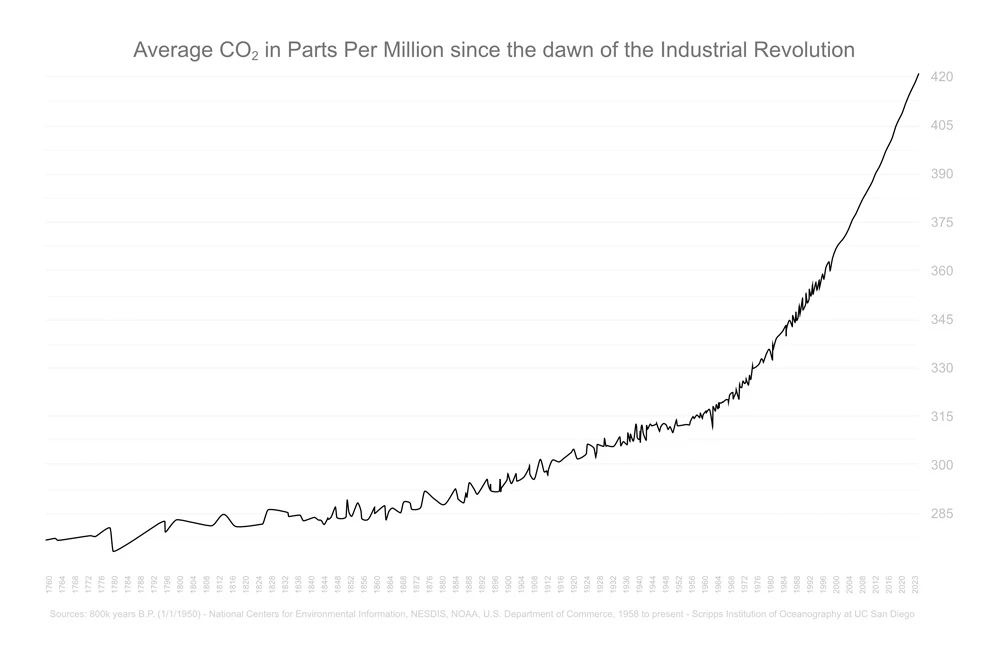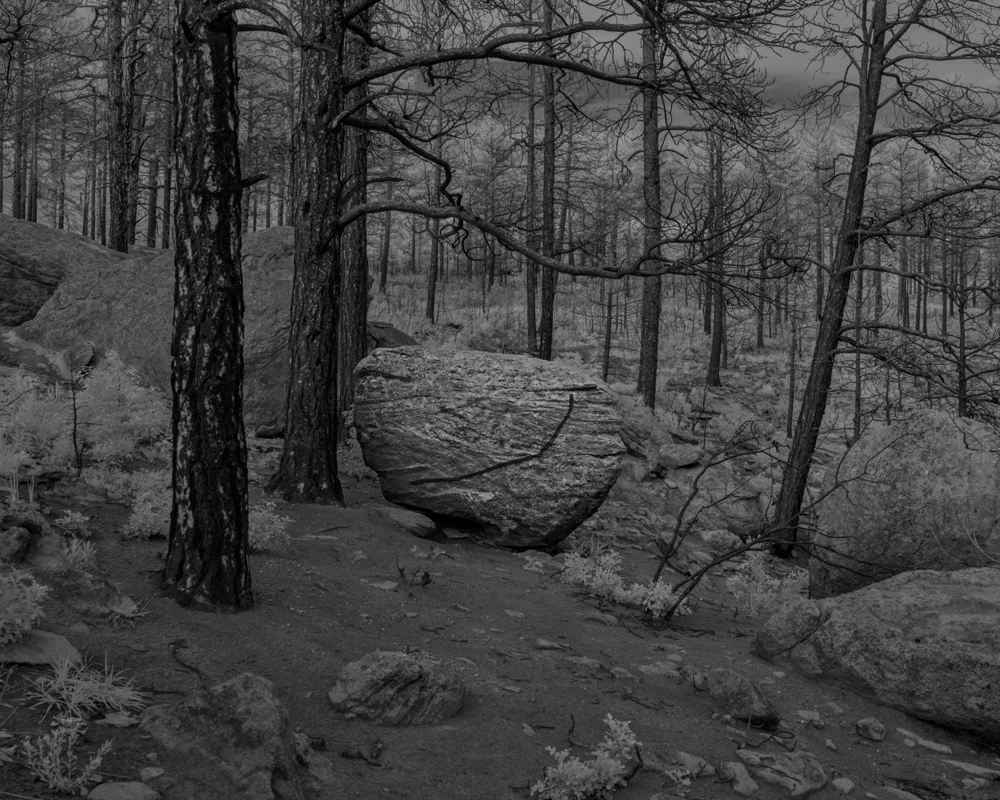
Keeling Curve I, Carreton Canyon, Santa Fe N.F.
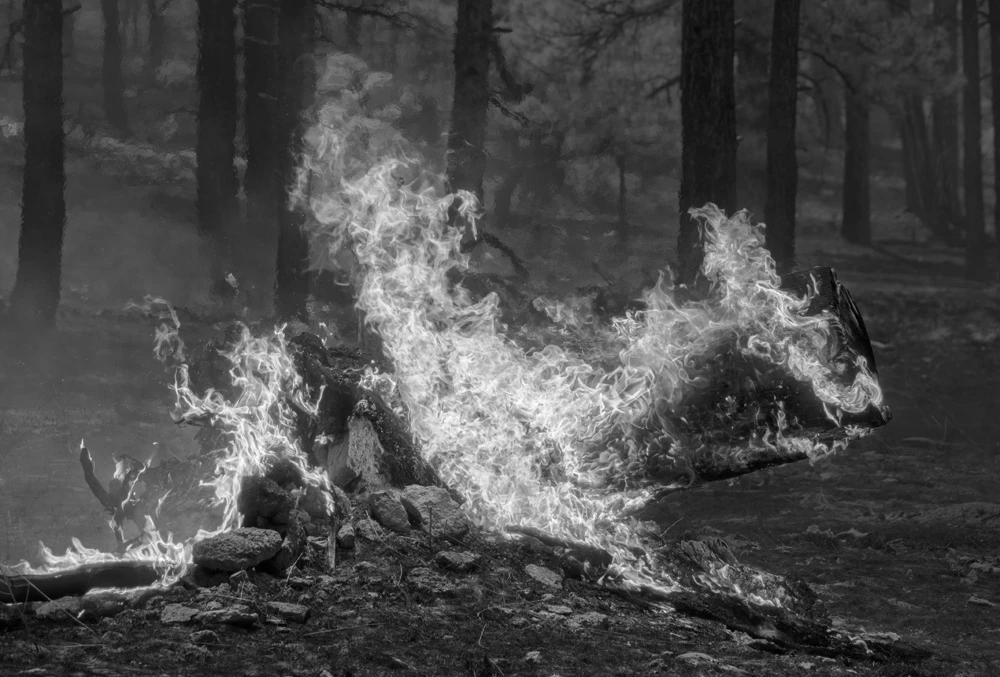
Flaming stump, Cooney Point, Gila N.F.
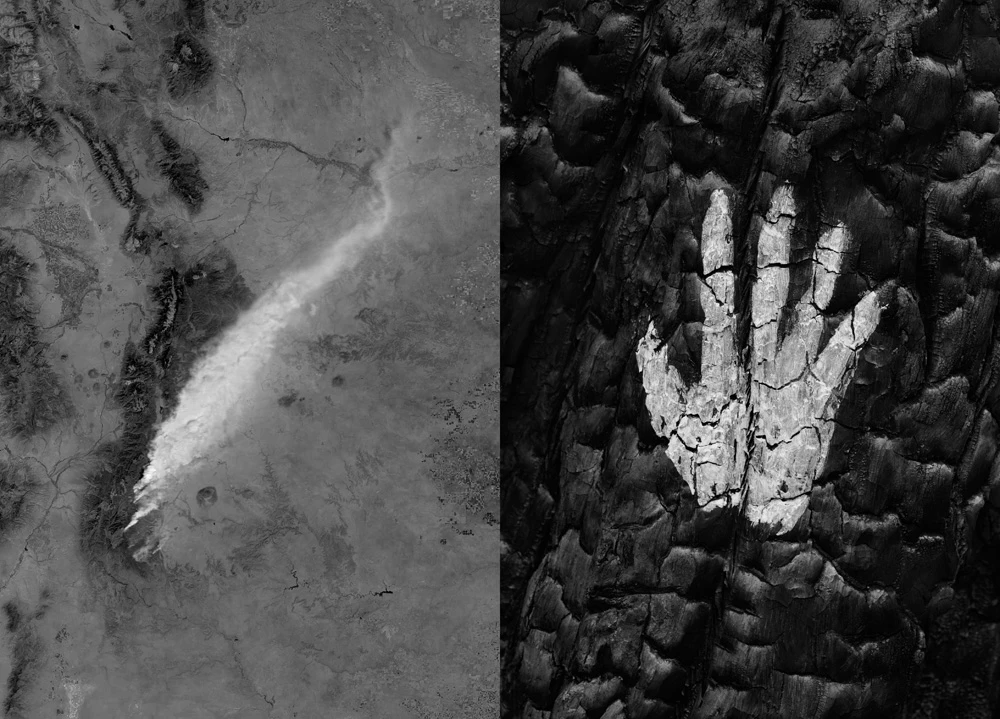
Smoke plume I, 215-mile-long smoke plume, May 10, 2022 | Handprint, Cerro Pelado, Santa Fe National Forest
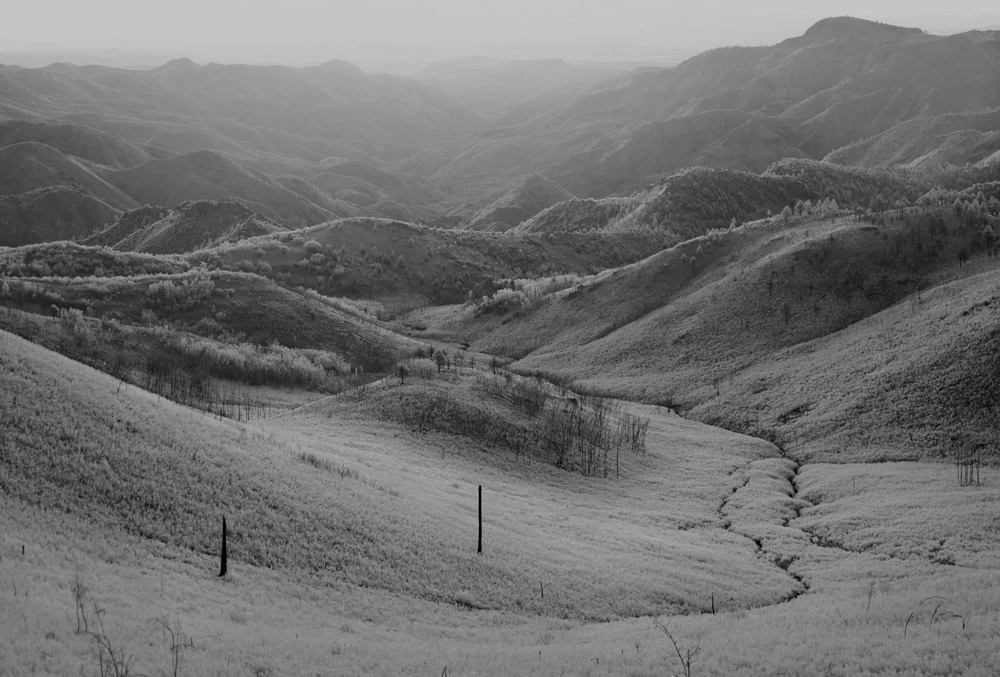
Smoke haze sunrise, Las Animas Valley, Gila National Forest
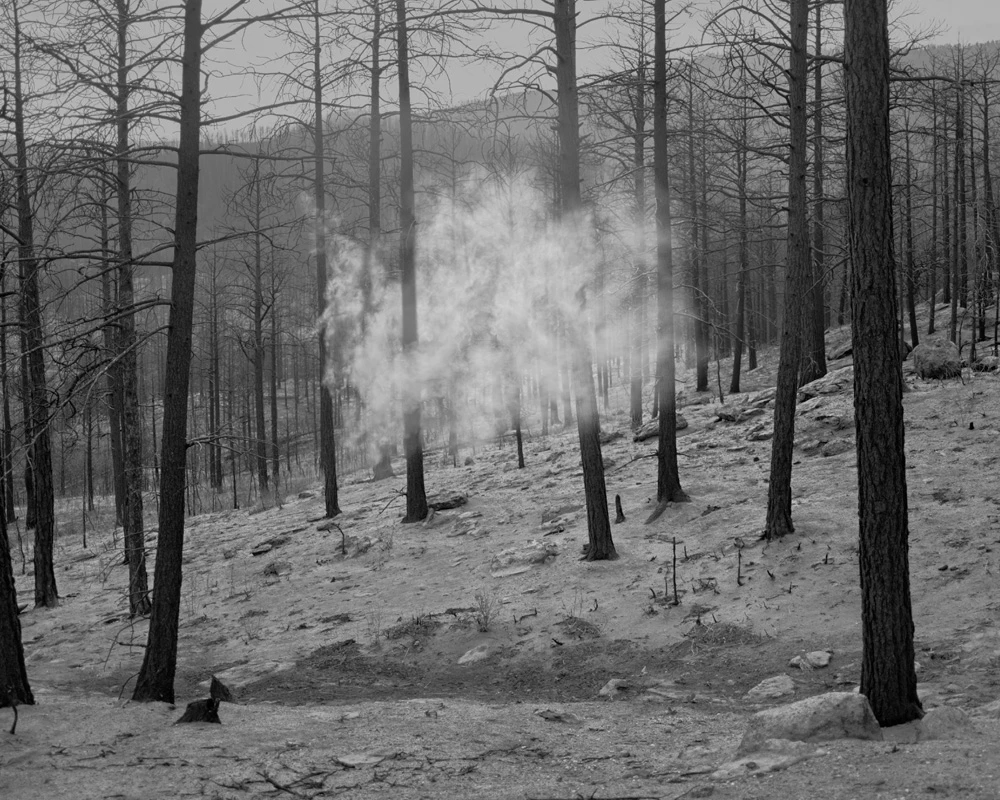
Artificial dust cloud, Carreton Canyon, Santa Fe National Forest
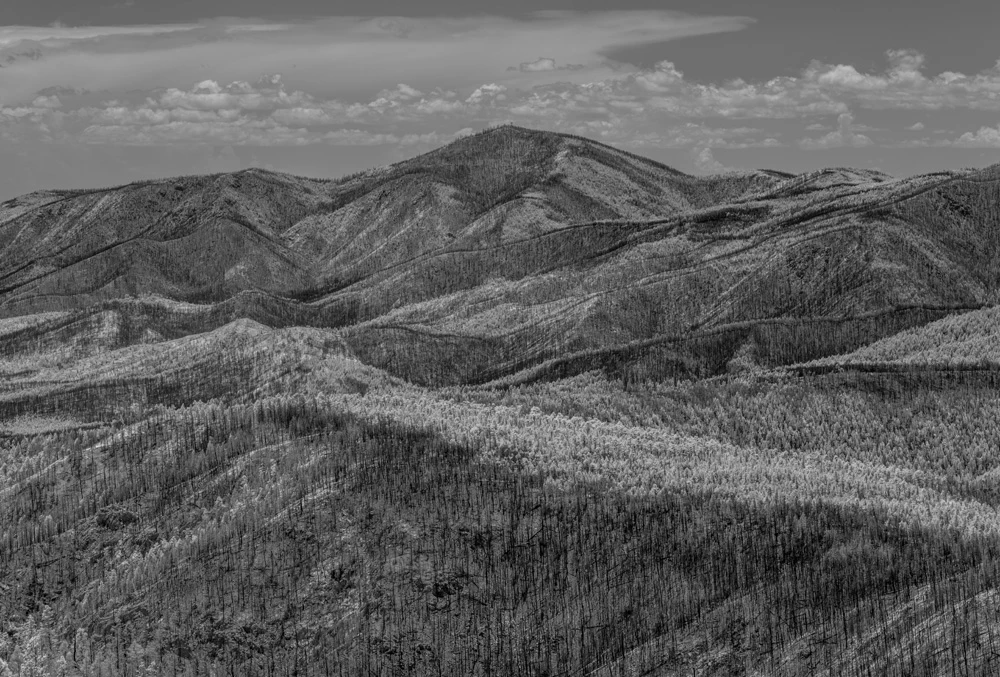
Barillas Peak, Santa Fe National Forest
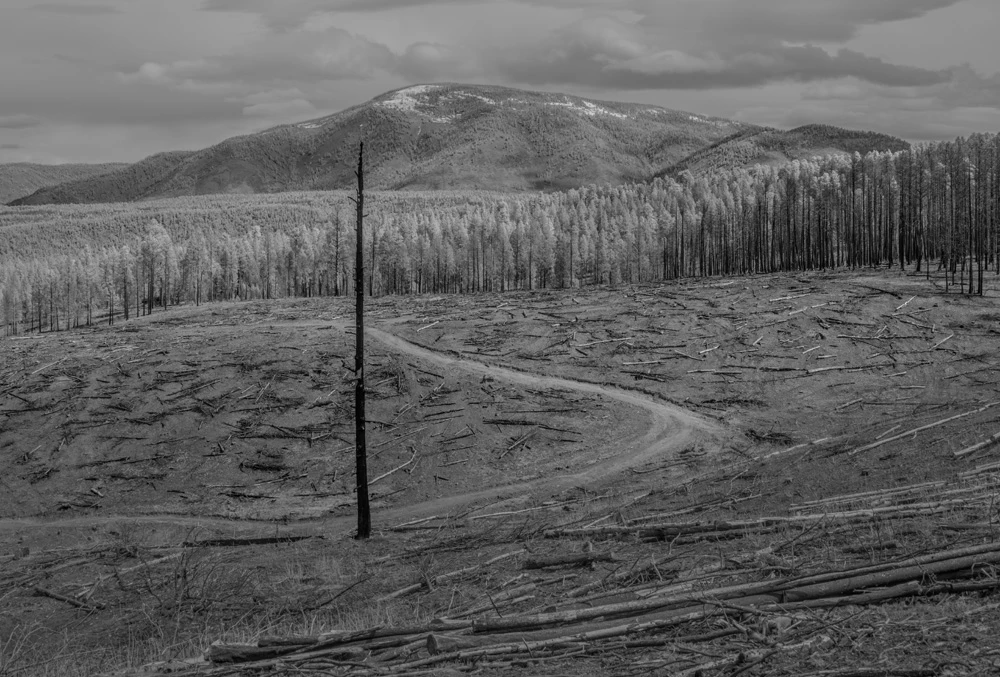
Redondo Peak, salvage logging, Los Griegos, Santa Fe National Forest.
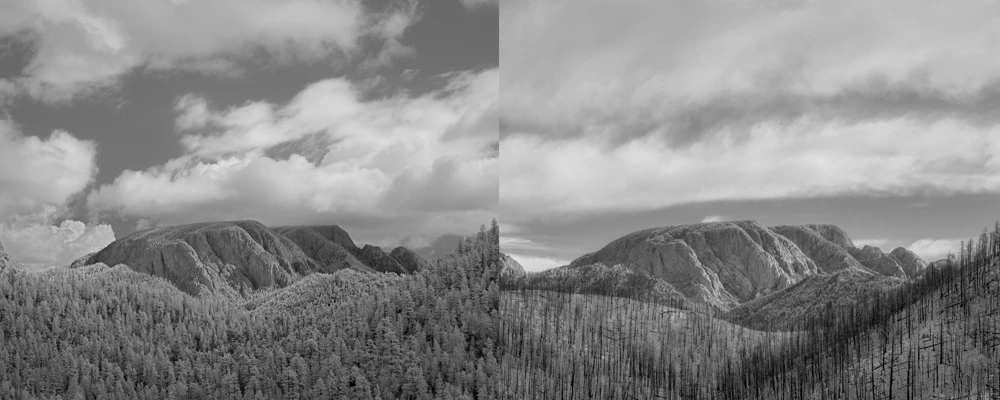
Hermit Peak 2019 | 2023, Santa Fe National Forest
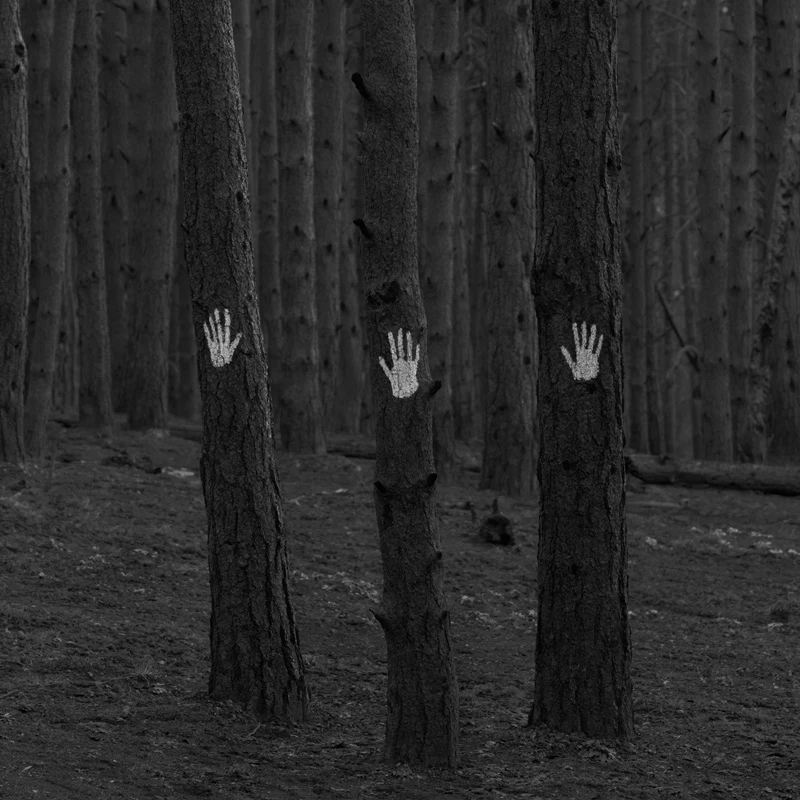
Three hands, three trees, Los Griegos, Santa Fe N.F.
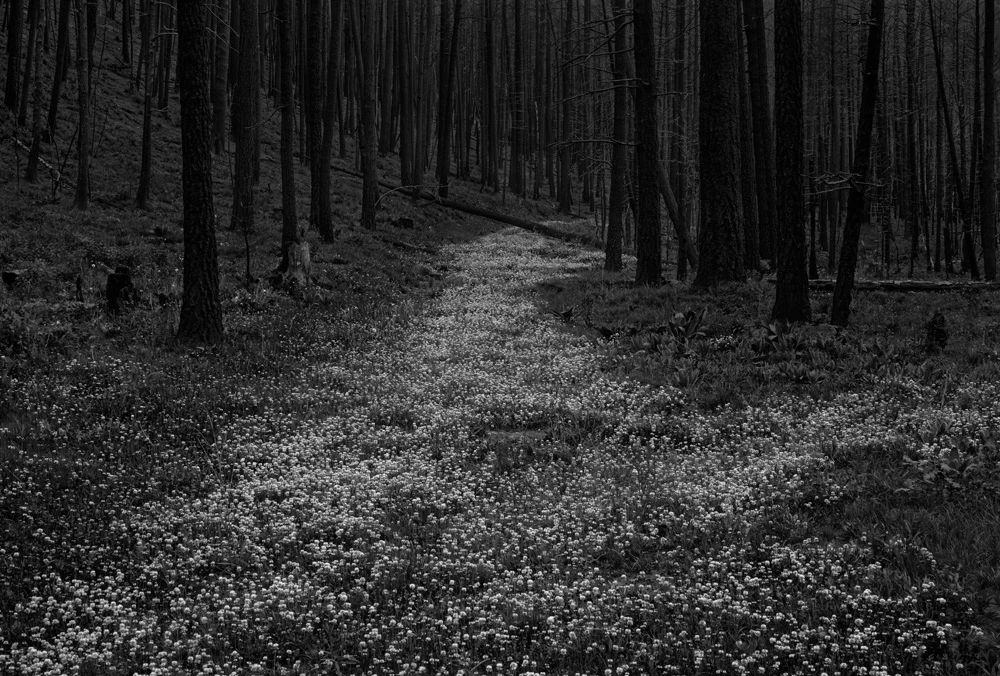
Flowering path, Carreton Canyon, Santa Fe National Forest
Carbon, Element video
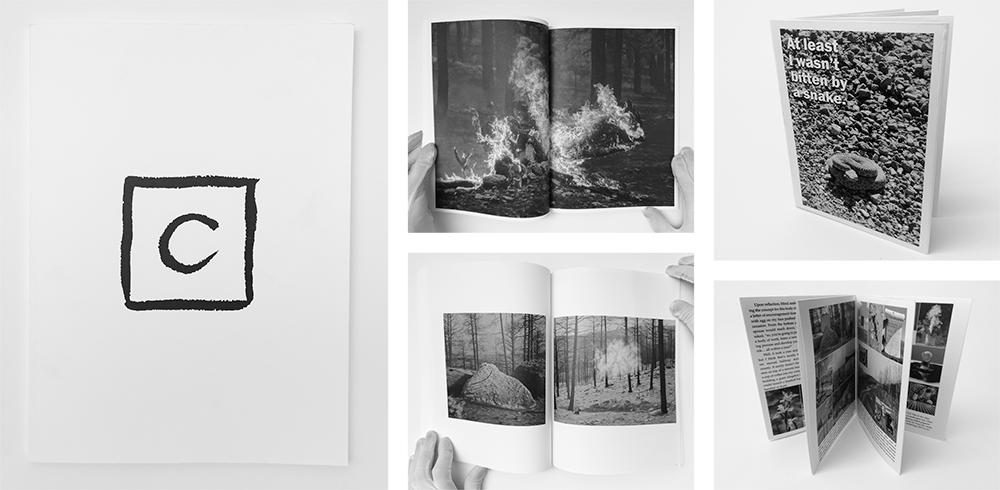
Carbon, Element book and Zine
Photography Book + Zine
Linking Human-Caused Global Warming to Wildfire Intensity through Striking Photography and Site-specific Charcoal Pigment Intaglio Prints
Book
- 60 pages
- 36 beautifully printed duotone images, five graphs & maps
- 8.75 x 12 inches, perfect bound
- Signed with artist-made wildfire charcoal pigment ink
Zine
- Included with every book purchase
- Text and captions describing the photography, ink making and printing process
- 8 pages, 38 halftone images
- 4.25 x 5.5 inches, hand folded
Special Edition
- Book, Zine & Limted Edition Print
- 3 x 4 inch print made with wildfire charcoal pigment ink
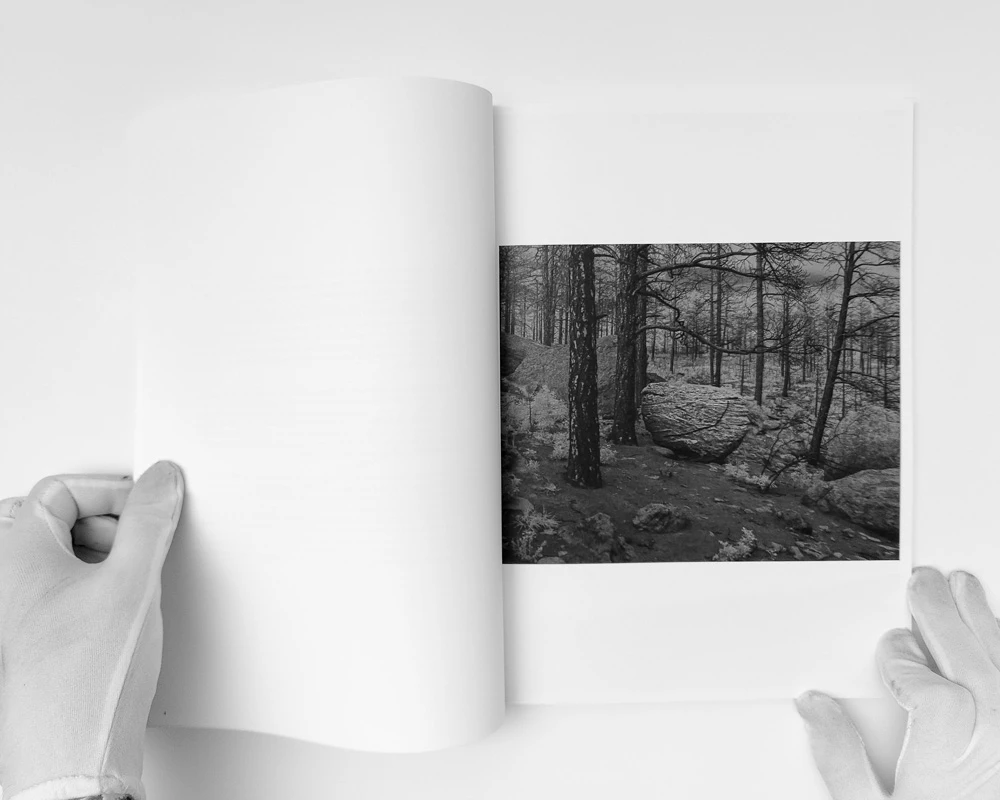
Page 5
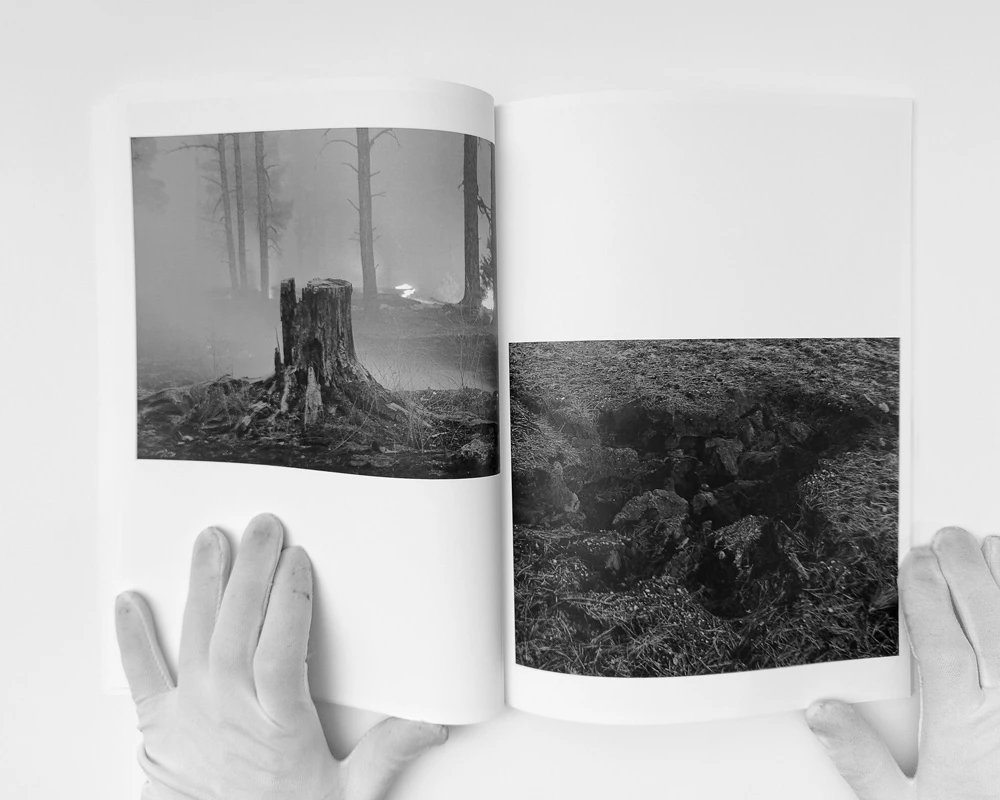
Pages 14 & 15
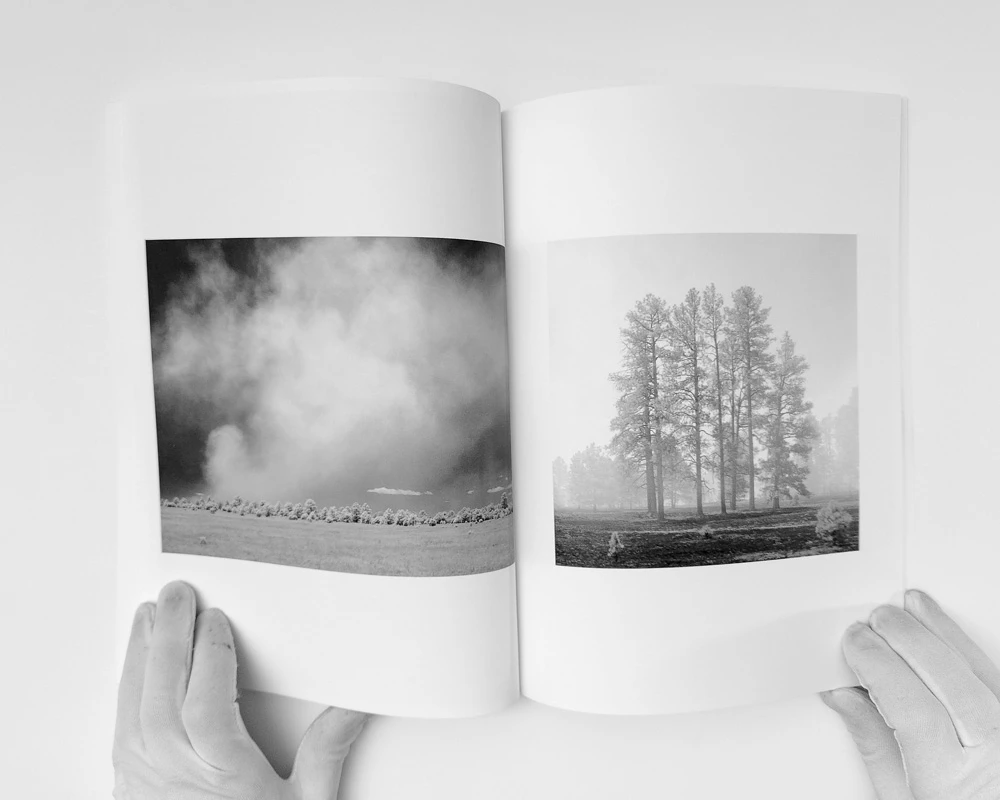
Pages 24 & 25
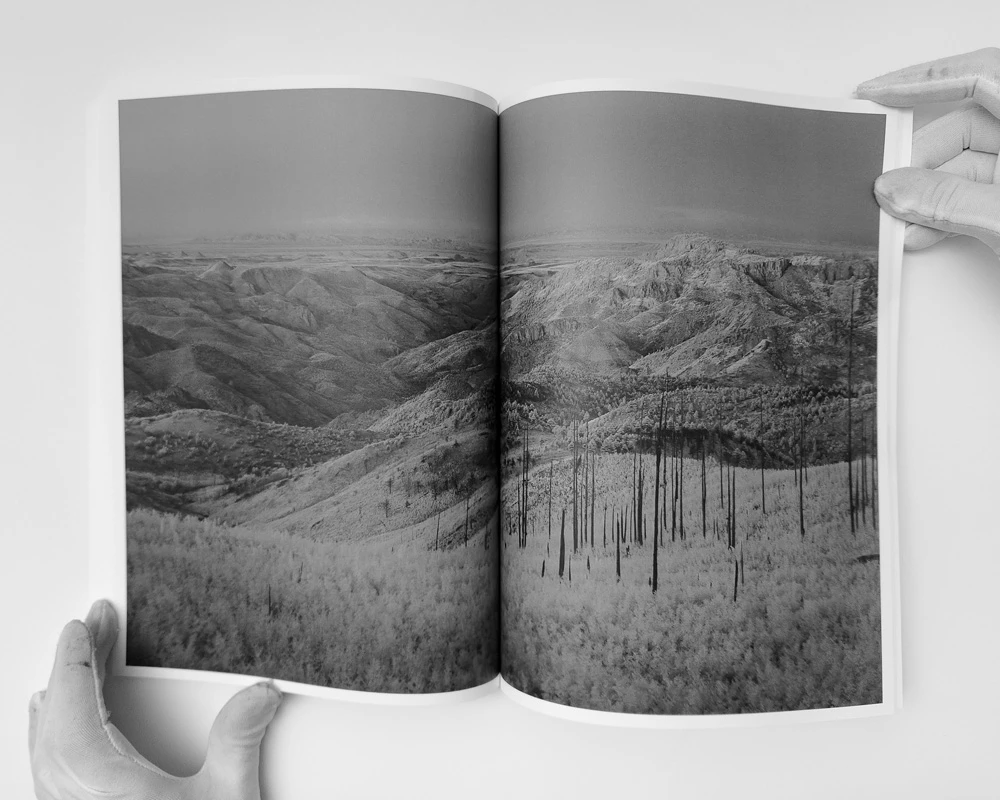
Full spread interior pages 36 & 37
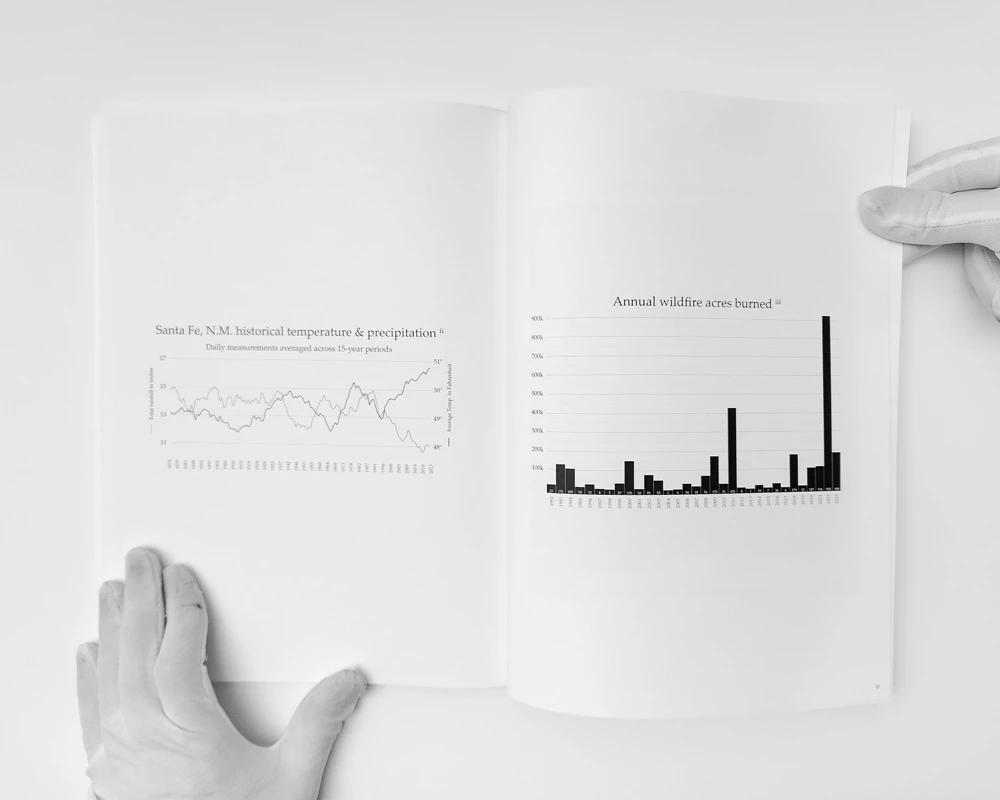
Climate graphs and charts
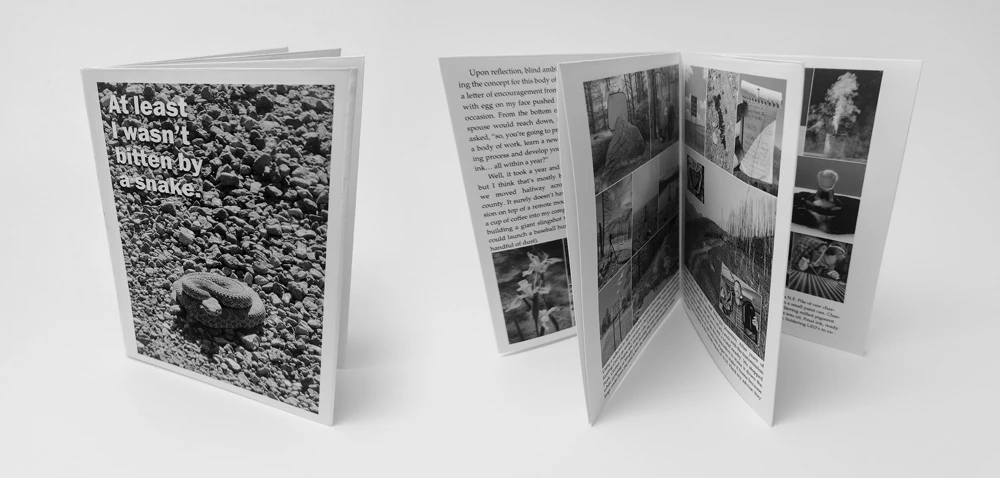
Behind the Scenes 'zine
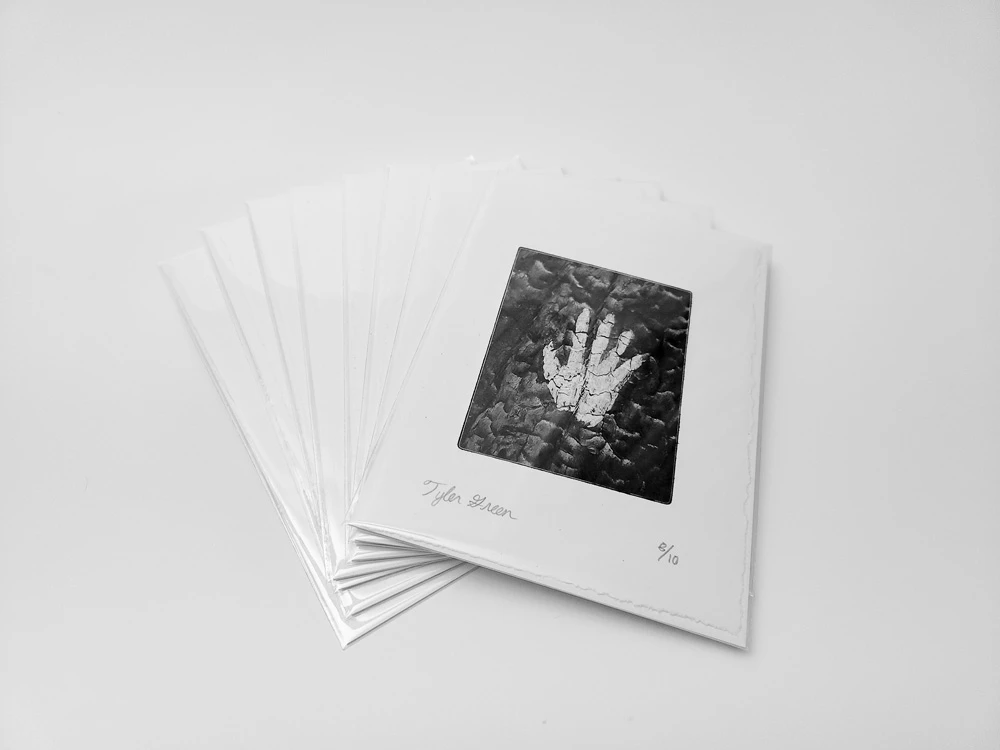
Special Edition 3x4 inch print (Handprint)
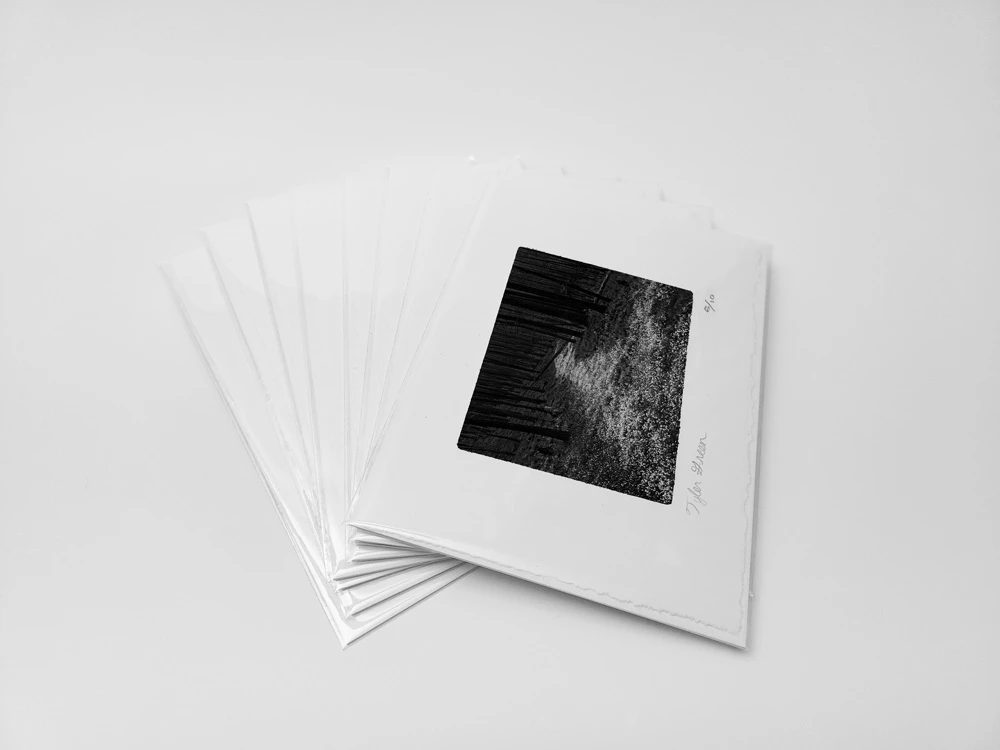
Special Edition 3x4 inch print (Flowering Path)
Carbon, Element
Carbon, Element explores the connection between human-caused global warming and increased wildfire intensity. Beginning with the industrial revolution, fossil fuel emissions have increased the amount of carbon dioxide in the Earth's atmosphere by over fifty percent, reaching a new annual high every year since 1995. This increase in carbon dioxide has warmed the planet by creating a greenhouse effect that traps heat within the atmosphere.
One of the key indicators of a warming planet is drought. Over the past two decades, three quarters of New Mexico counties have experienced moderate to exceptional drought, leading to water emergencies, widespread crop and pasture losses and a devastating wildfire season that burned nearly 860 thousand acres across the state in 2022.
Photographs of areas impacted by the Hermit Peak / Calf Canyon, Cerro Pelado and Black fires depict a charred landscape where blackened trunks stand along barren hillsides. Holes are sunken into the earth where tree roots were incinerated and the bones of animals are found blackened and brittle. Photographs of smoke from the 2023 Pass fire reveal dark ominous skies while other images show flames climbing the trunk of trees.
Handprints painted on burnt tree trunks allude to the human influence on the increasingly destructive nature of these fires, while images of salvage logging portray the continued impact of human activity across the landscape. Together, these photographs express the devastating force of wildfires that have become more intense in part by human-caused global warming.
The connection between human behavior and increasing wildfire intensity is further expressed through the photographic print. Prints made for exhibition were produced using the intaglio [in-tahl-yoh] printmaking process. This process involves etching the image into a surface, applying ink into the recessed areas and transferring the ink onto paper under significant pressure. The ink used to print the exhibition photographs is made from a raw pigment refined from charcoal collected from the same fire-scarred landscapes depicted in the images.
By incorporating this carbon-based ink into the printed artwork, a physical connection is formed between the photograph and the subject. This serves as an element of continuity between the fires, photos and the warming climate, accentuating the relationship between our collective actions and the well-being of our environment.

Funded in part by the Fulcrum Fund
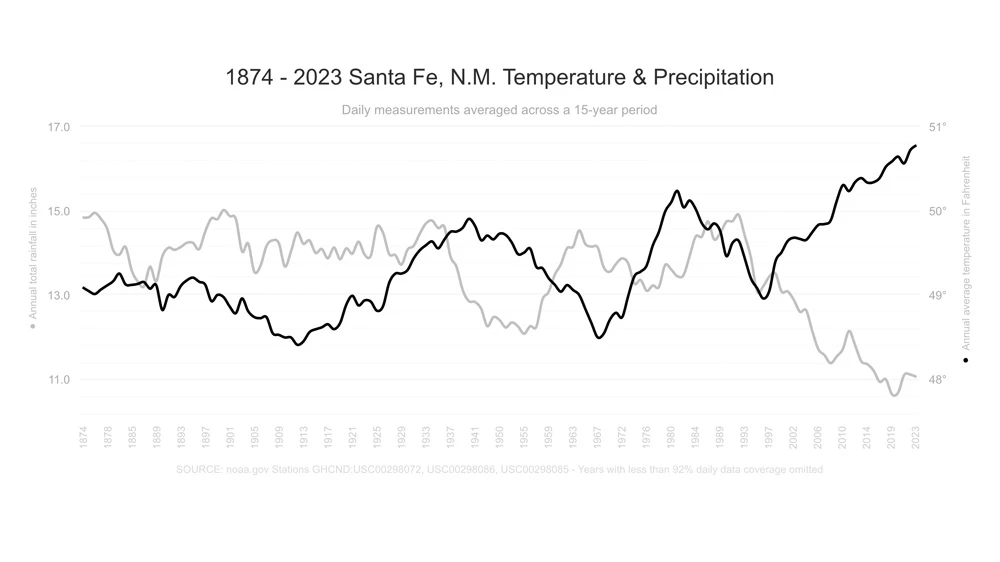
Santa Fe, N.M. historical temperature & precipitation
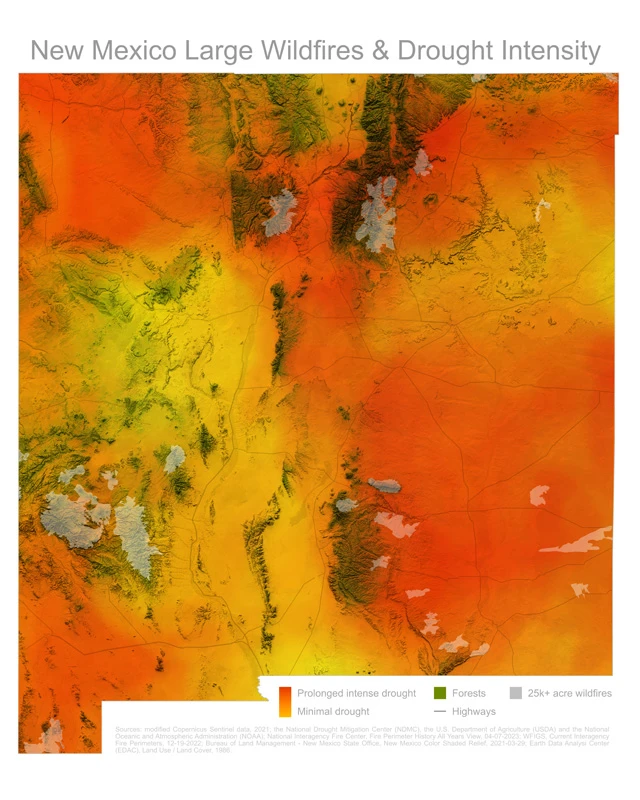
New Mexico large wildfires & drought intensity
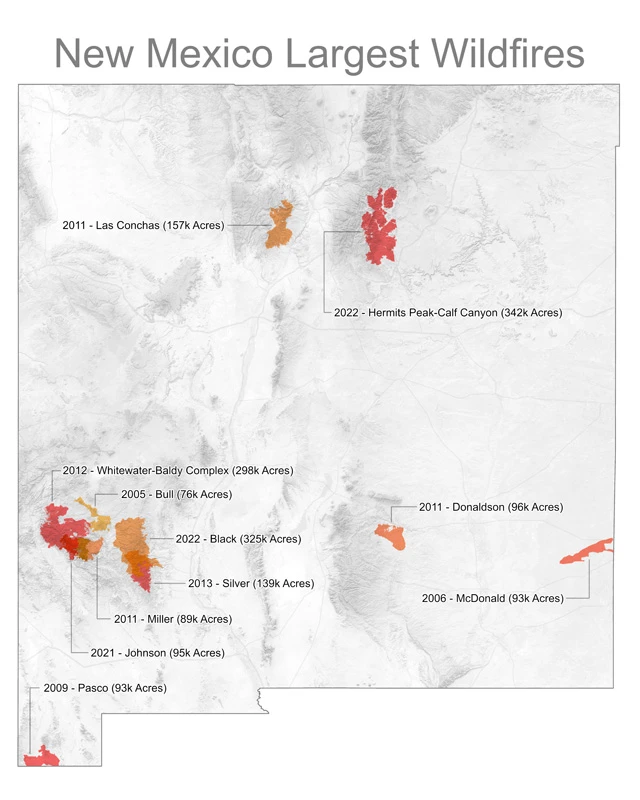
N.M. largest wildfires
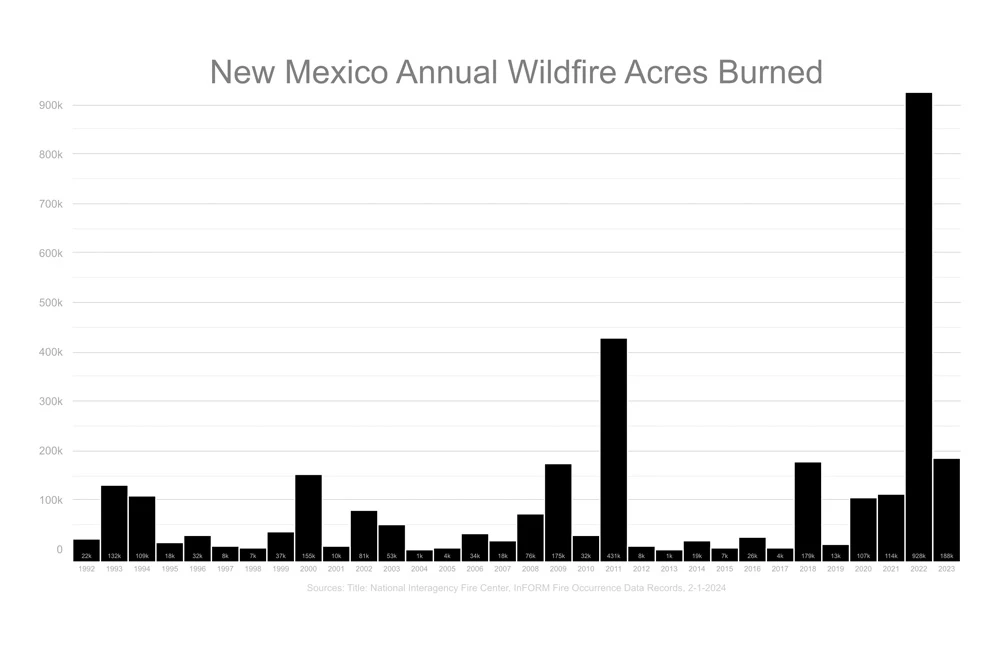
N.M. annual wildfire acres burned
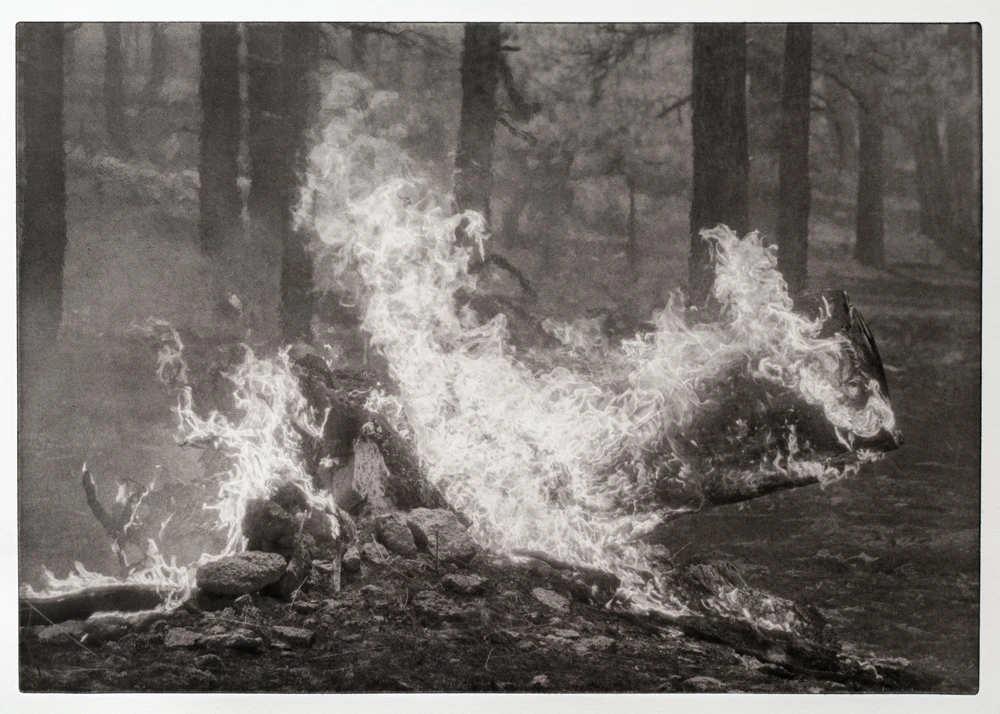
Flaming stump; Pass Fire (54k acres burned)
Photopolymer gravure prints. Made with ink crafted from charcoal collected near where the images were captured. Edition of three prints plus two artist proofs. 8.25 inches on the short side.
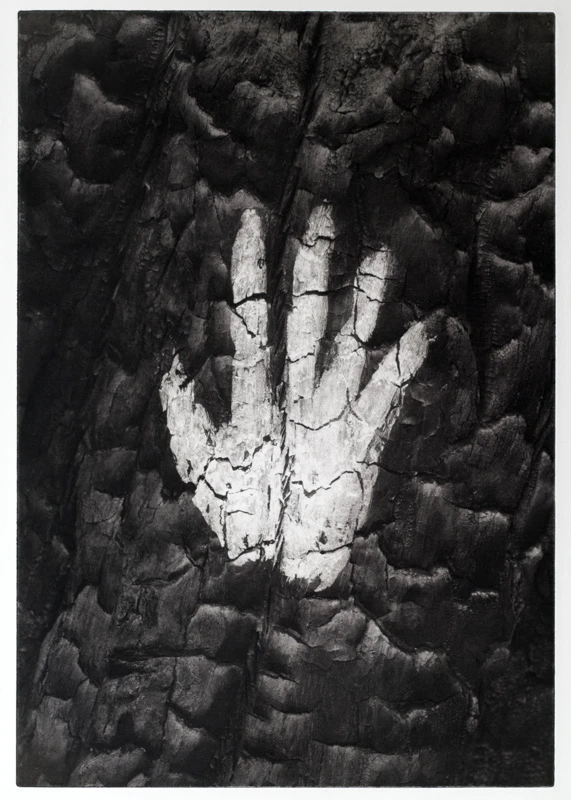
Handprint; Cerro Pelado Fire (46k acres burned)
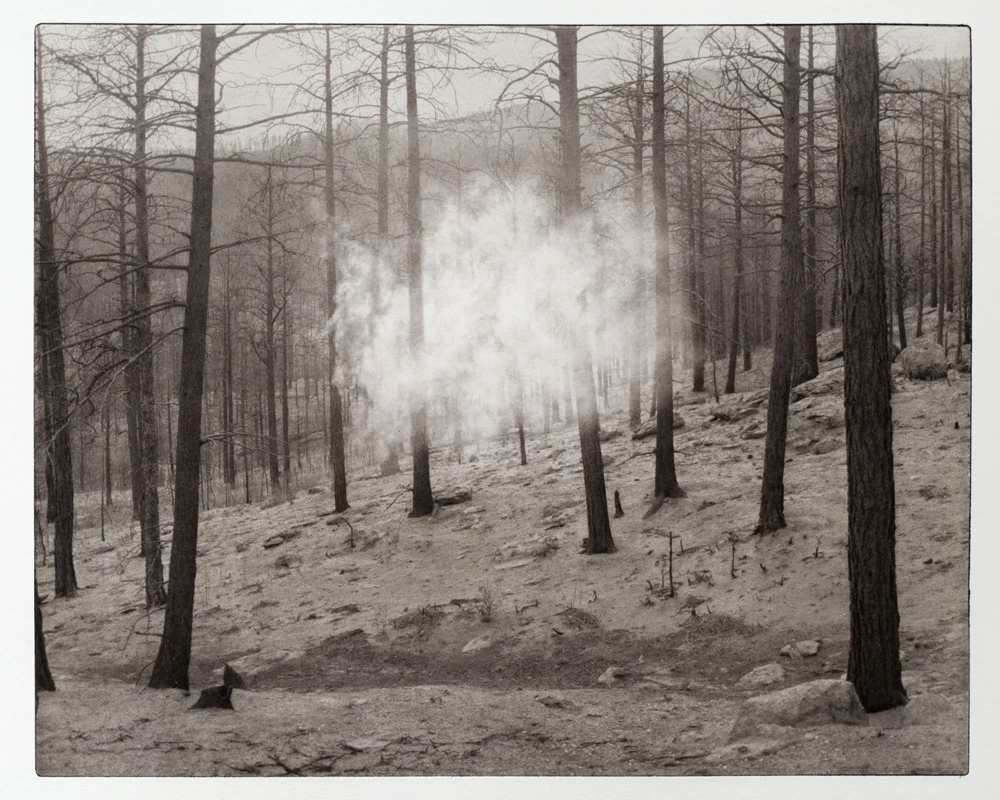
Smoke plume sunset; Pass Fire (54k acres burned)
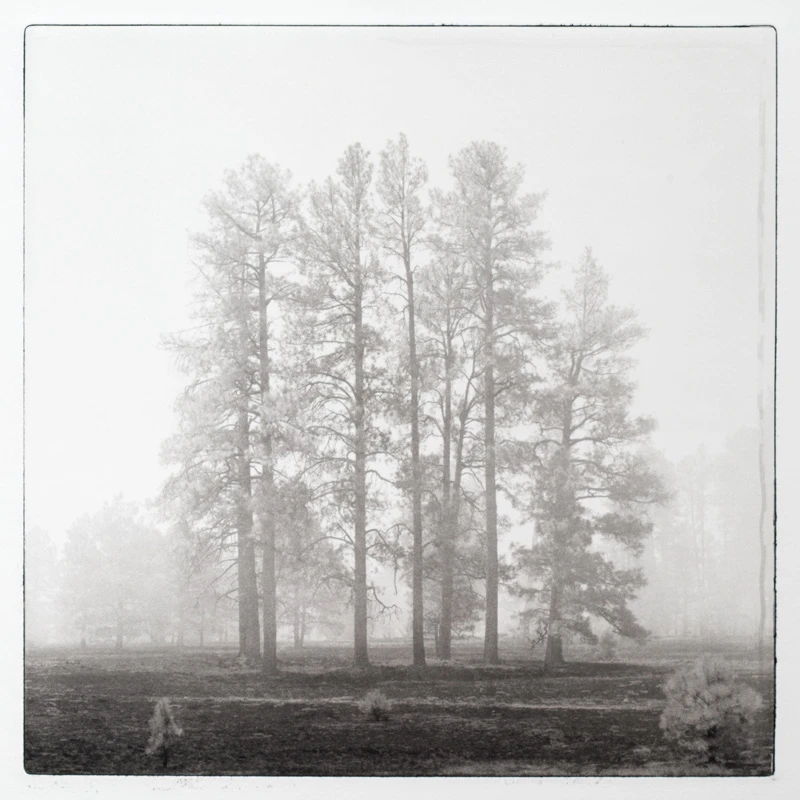
Tree stand, smoke and scorched grass; Pass Fire (54k acres burned)

Lone pine, salvage logging; Hermit Peak, Calf Canyon Fire (341k acres burned)
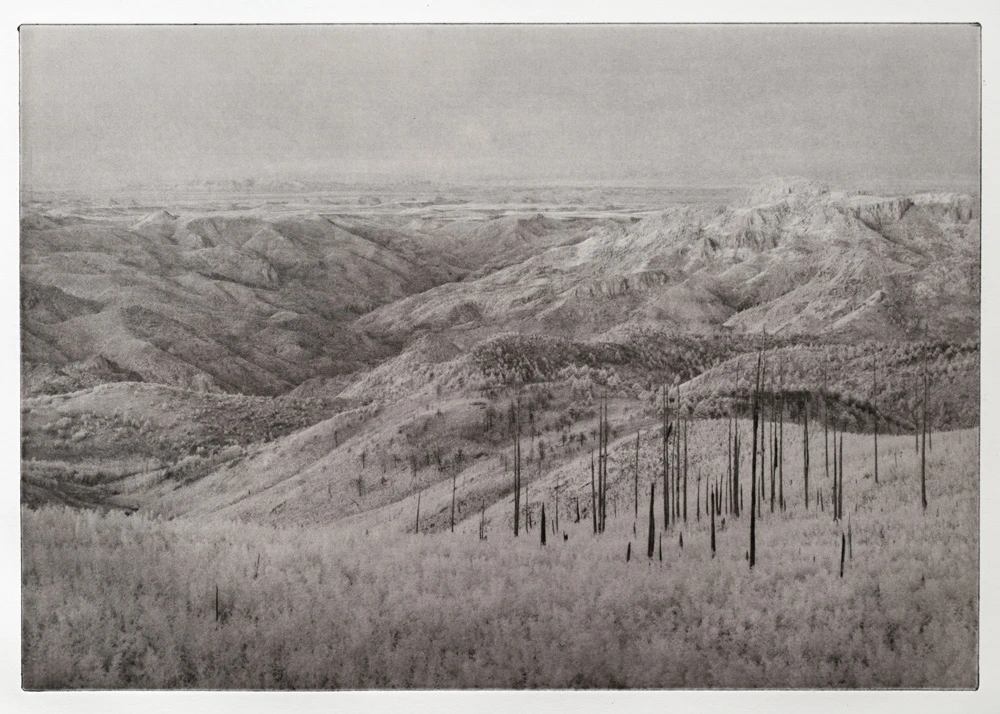
New growth and burnt snags; Black Fire (325k acres burned)
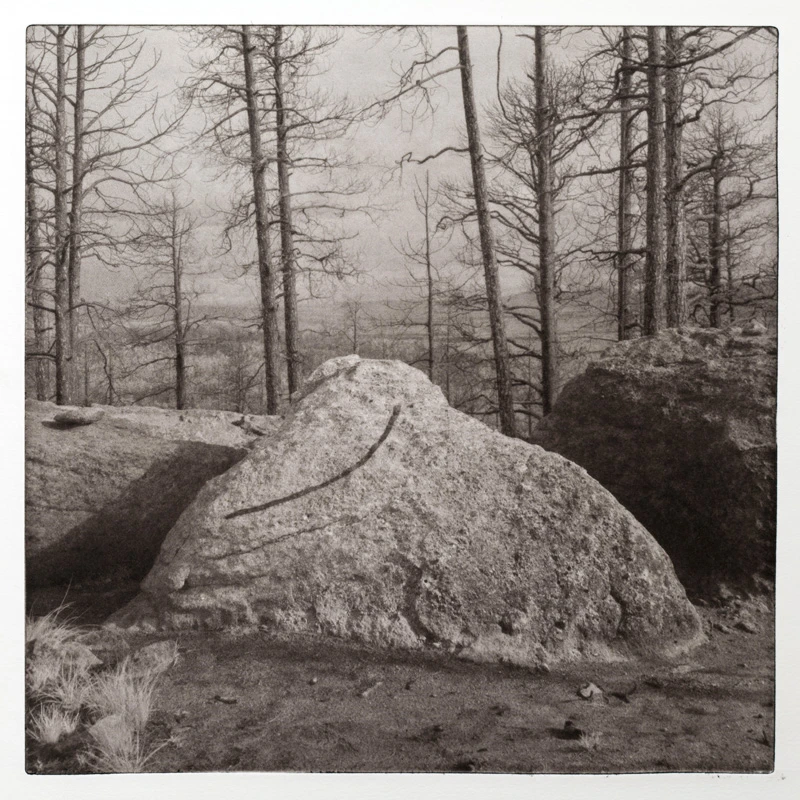
Keeling Curve II; Hermit Peak, Calf Canyon Fire (341k acres burned)
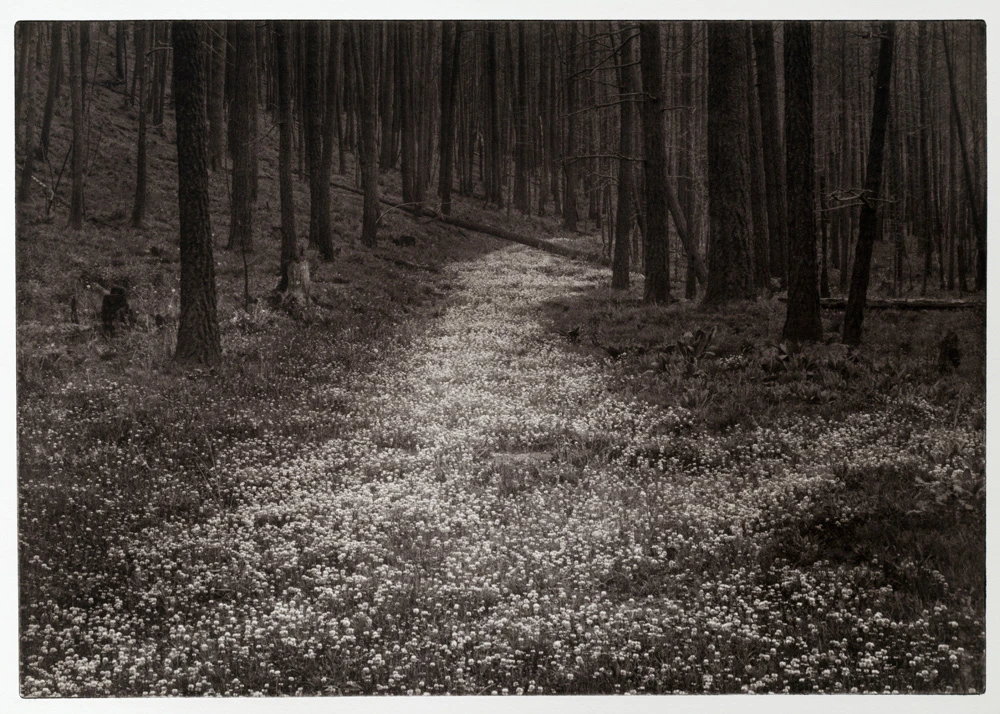
Flowering path; Hermit Peak, Calf Canyon Fire (341k acres burned)
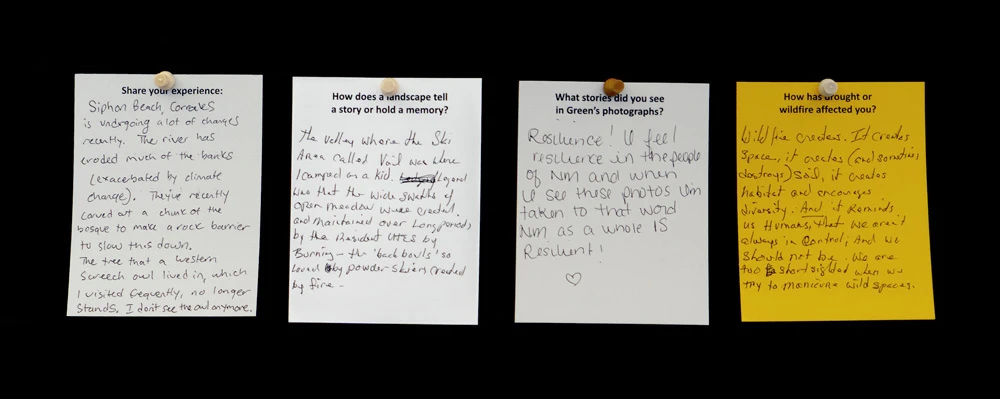
Exhibition testimonials
Share your experience:
"Siphon Beach, Corrales is undergoing a lot of changes recently. The river has eroded much of the banks (exacerbated by climate change). They've recently carved out a chuck of the bosque to make a rock barrier to slow this down. The tree that a Western Screech Owl lived in, which I visited frequently, no longer stands. I don't see the owl anymore."
How does a landscape tell a story or hold a memory?
"The valley where the ski area called Vail (is now), was where I camped as a kid. Legend has (it) that the wide swaths of open meadow were created and maintained over long periods by the resident Utes (a group of indigenous people) by burning - the back bowls, so loved by powder skiers, (were) created by fire."
What stories did you see in Green's photographs?
"Resilience! I feel resilience in the people of N.M. and when I see these photos I'm taken to that word. N.M. as a whole is resilient!"
How has drought or wildfire affected you?
"Wildfire creates. It creates space, it creates (and sometimes, destroys) soil, it creates habitat and encourages diversity. And it reminds us humans, that we aren't always in control; and we should not be. We are too shortsighted when we try to maintain wild spaces."
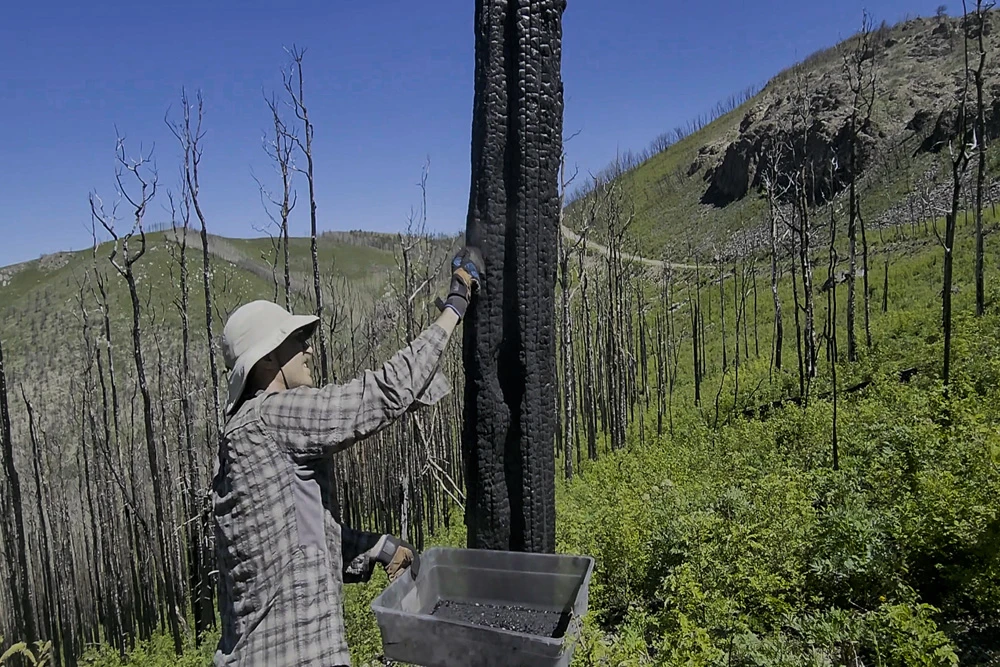
Collecting charcoal near Silver City, NM
The ink used to print the exhibition photographs was made from a raw pigment refined from charcoal collected from the same fire-scarred landscapes depicted in the images. This charcoal was collected, refined, milled and mixed with linseed oil to create an etching ink.
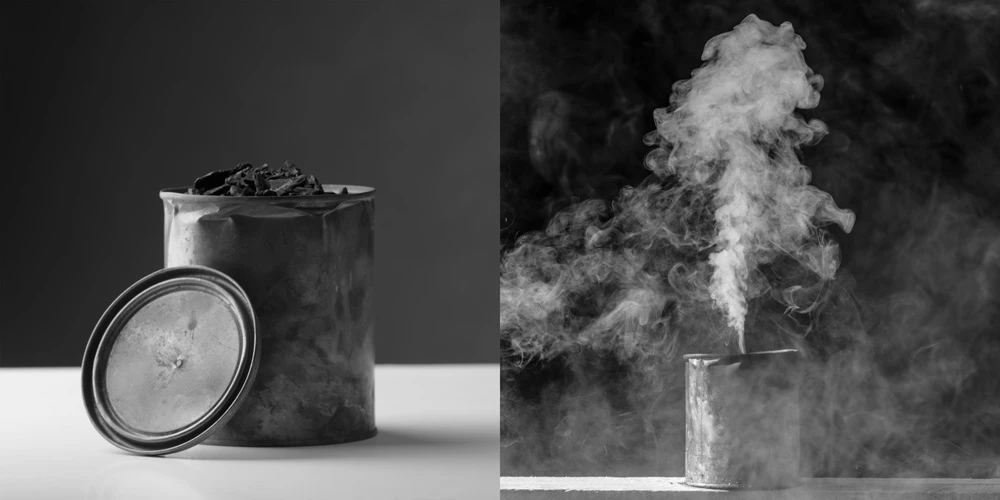
Charing collected charcoal in a paint can retort
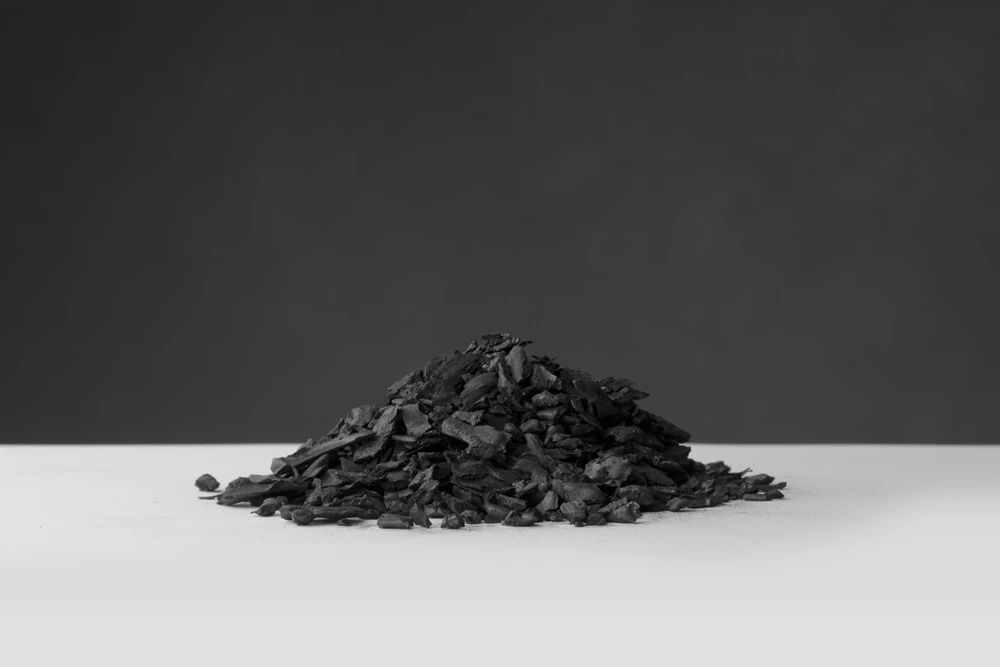
Processed charcoal
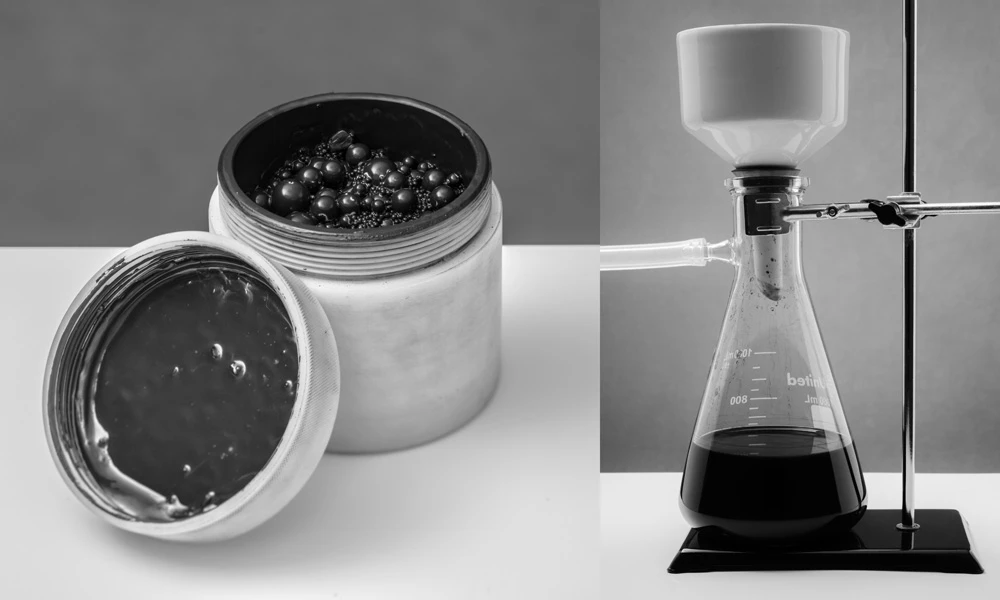
Milling jar with milling media and charcoal slurry, left, vacuum filtration system
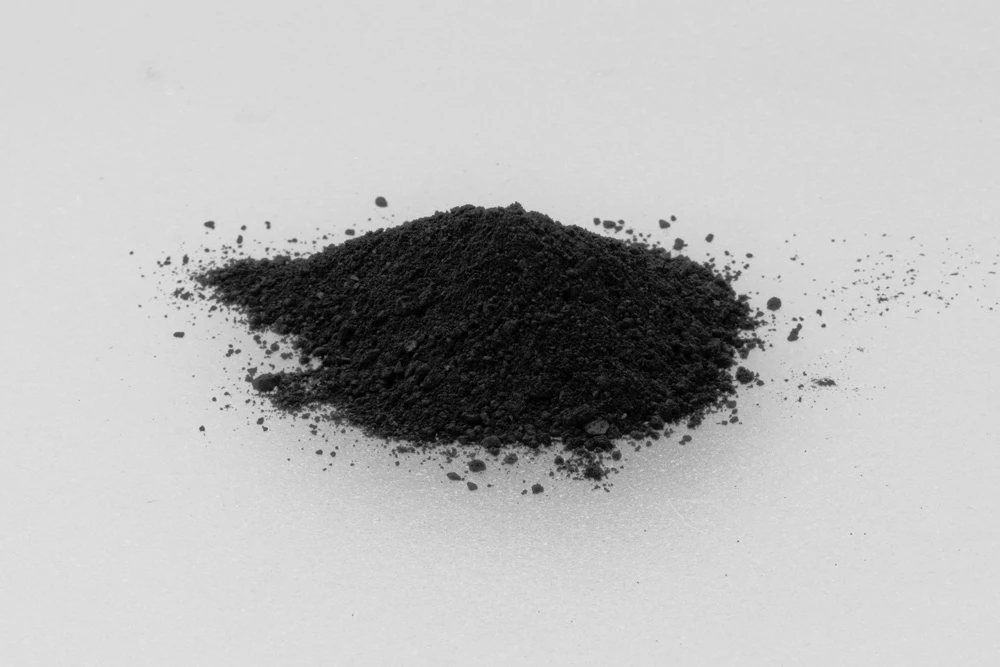
Milled charcoal pigment
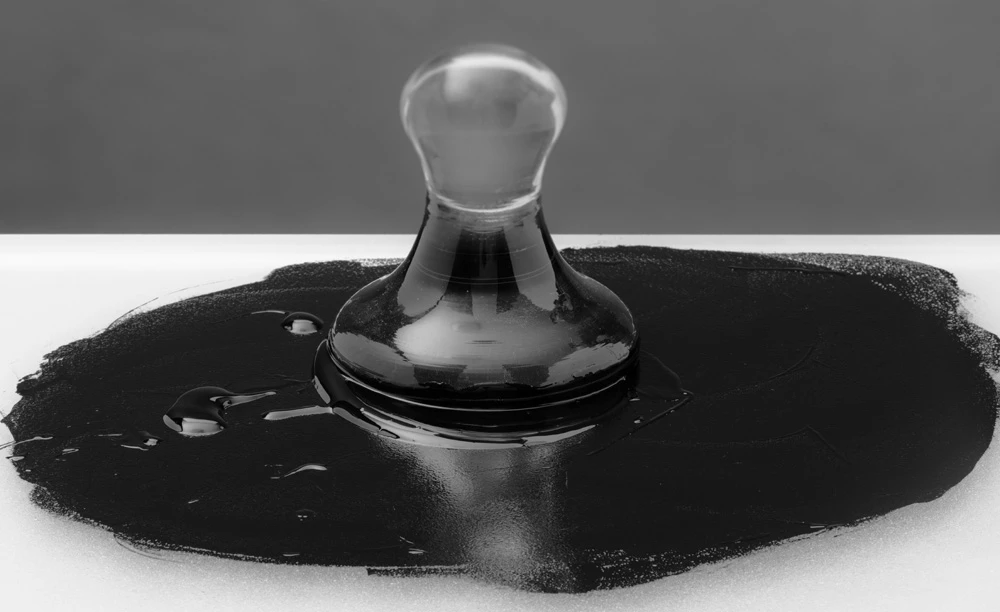
Mulling pigment and linseed oil
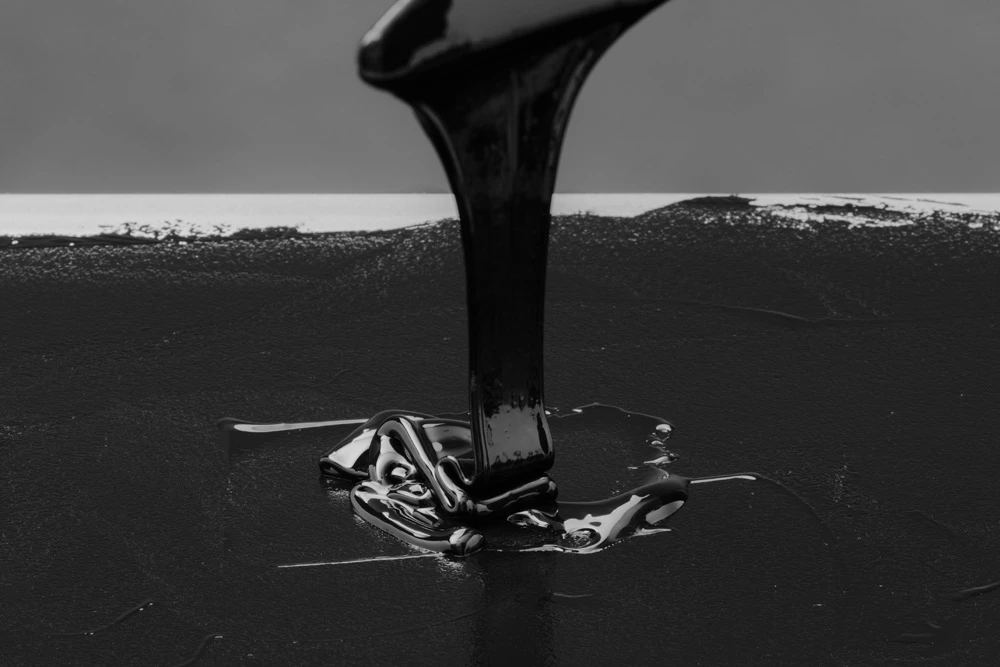
Finished carbon black intaglio ink
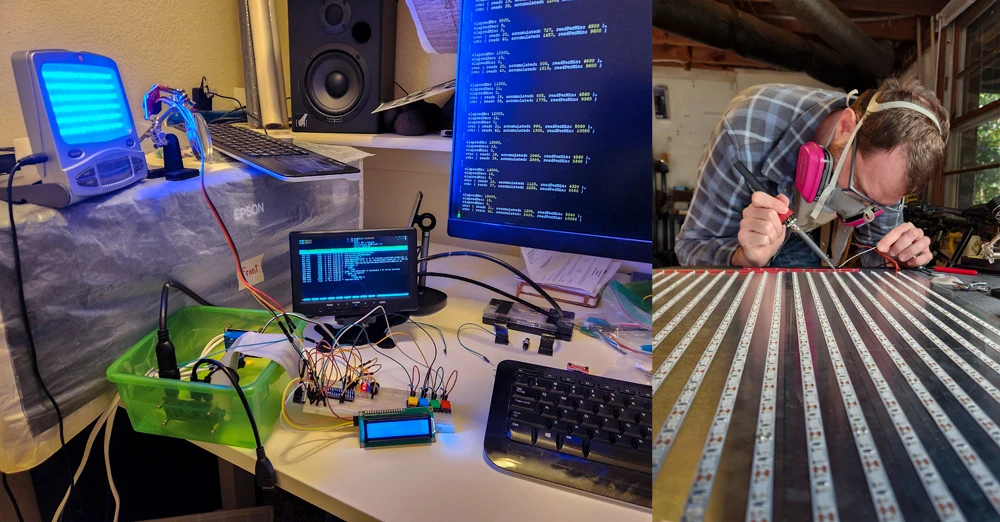
Building and coding an ultraviolet exposure unit to process photopolymer plates
Prints made for exhibition were produced using the intaglio [in-tahl-yoh] printmaking process. This process involves etching the image into a surface, applying ink into the recessed areas and transferring the ink onto paper under significant pressure. This project was printed using photopolymer plates which were exposed using a homemade U.V. light source.
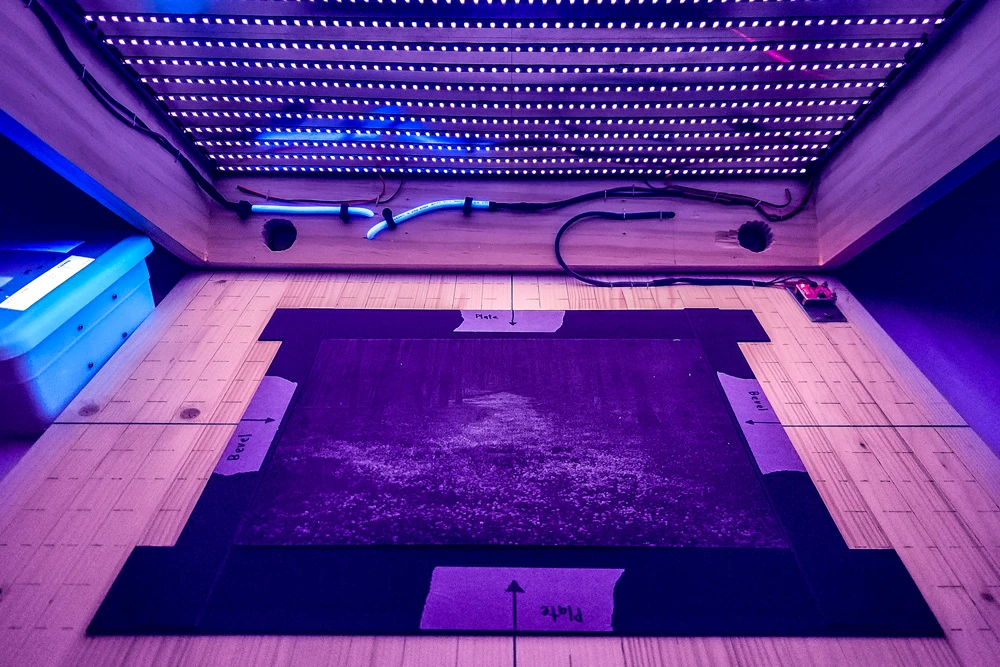
Finished UV exposure unit and photopolymer plate printed, with an inkjet printer
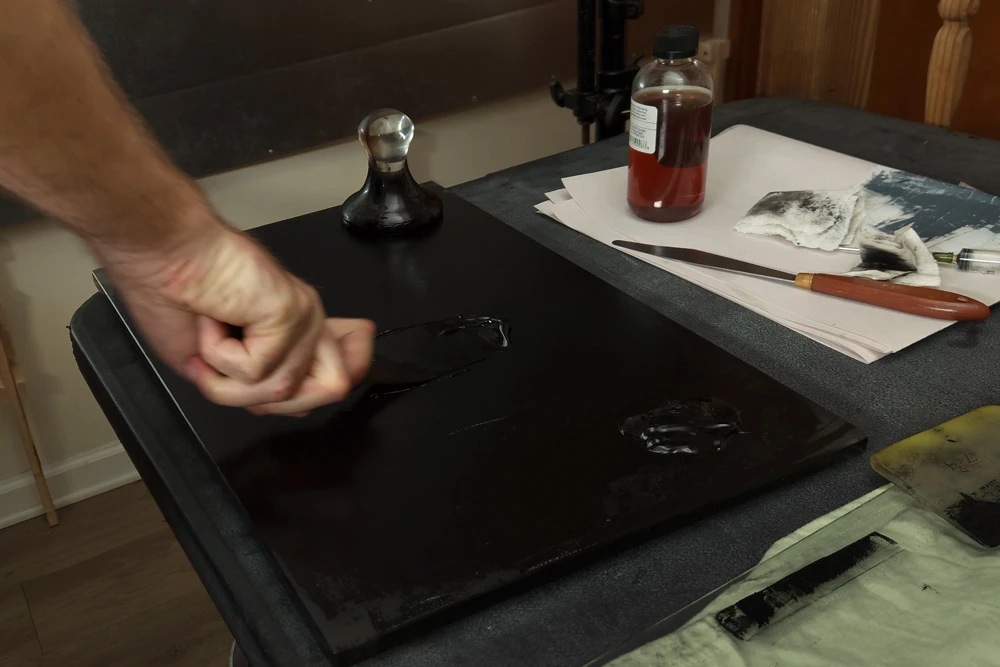
Preparing ink to make an intaglio print
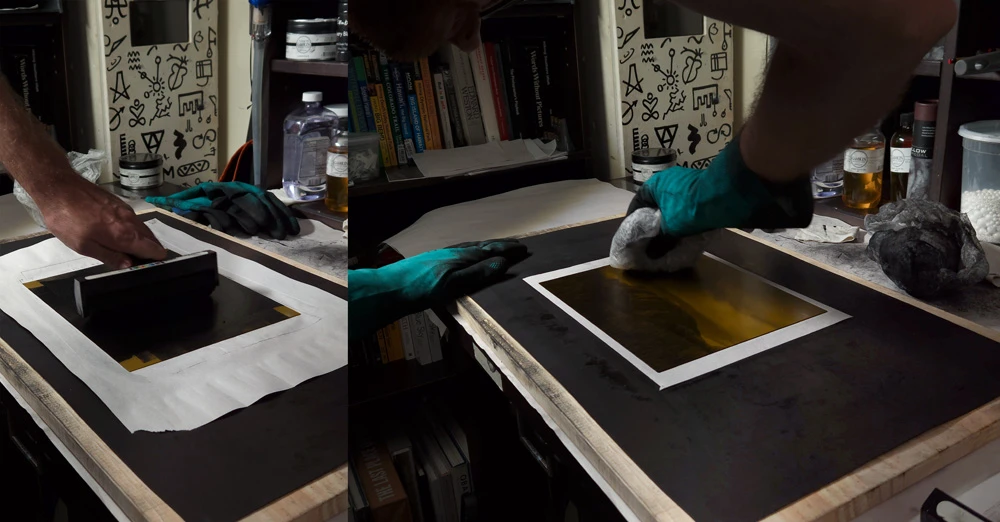
Inking and wiping a photopolymer plate
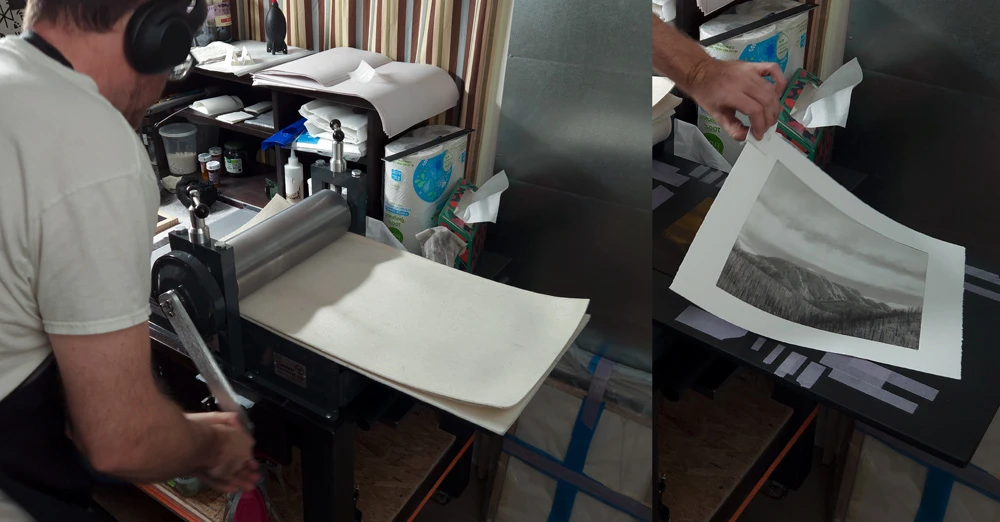
Pulling the print through the etching press
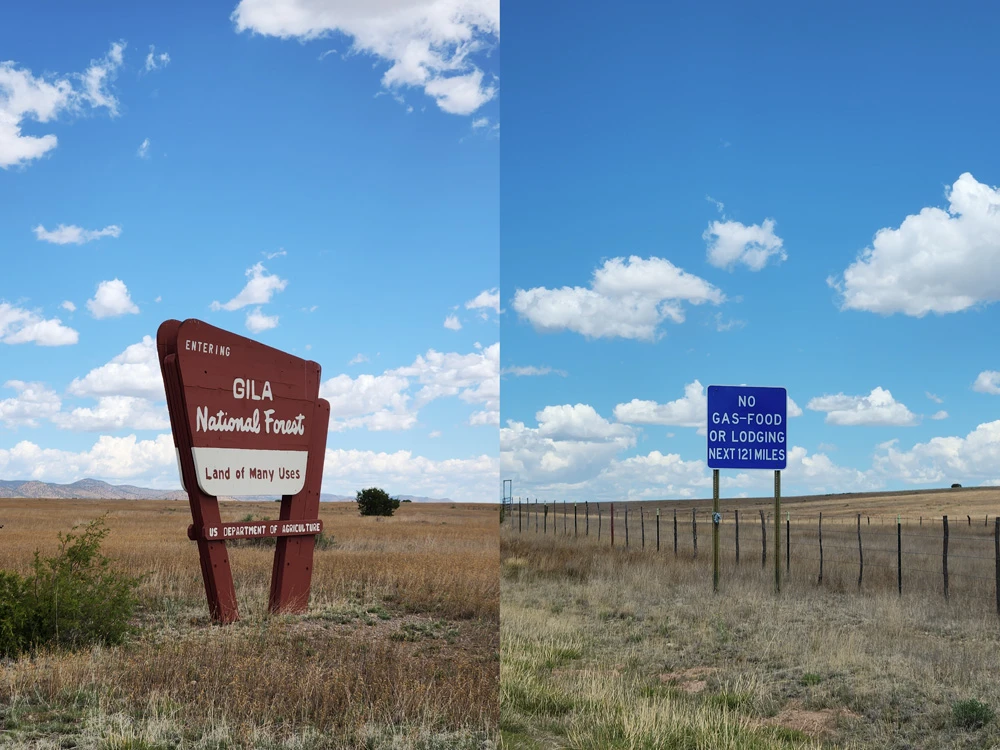
Photographing in a remote part of New Mexico
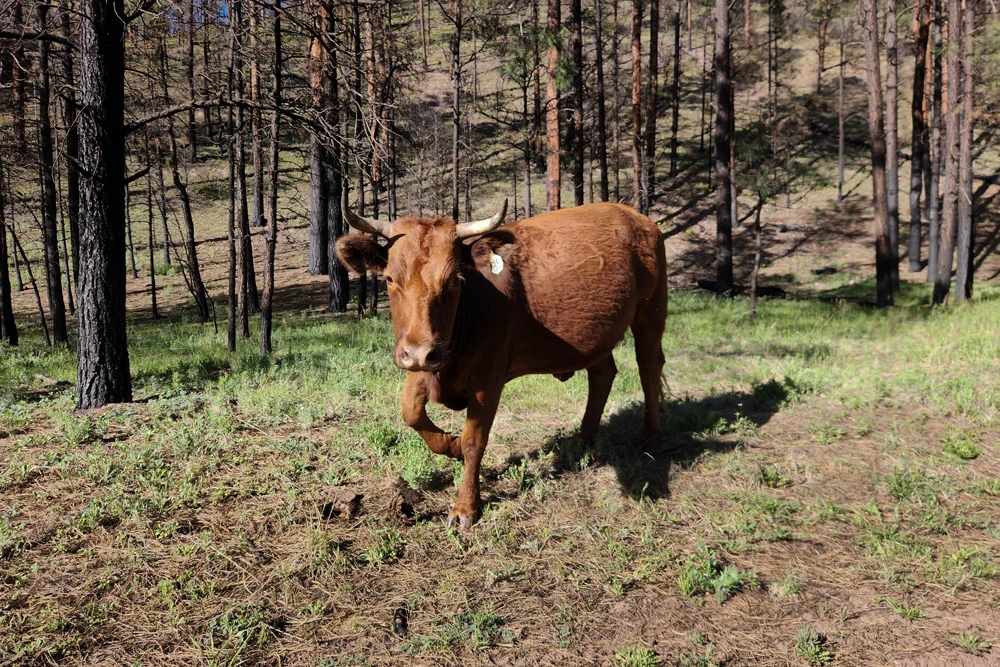
Cattle ranching is a big industry in rural N.M.
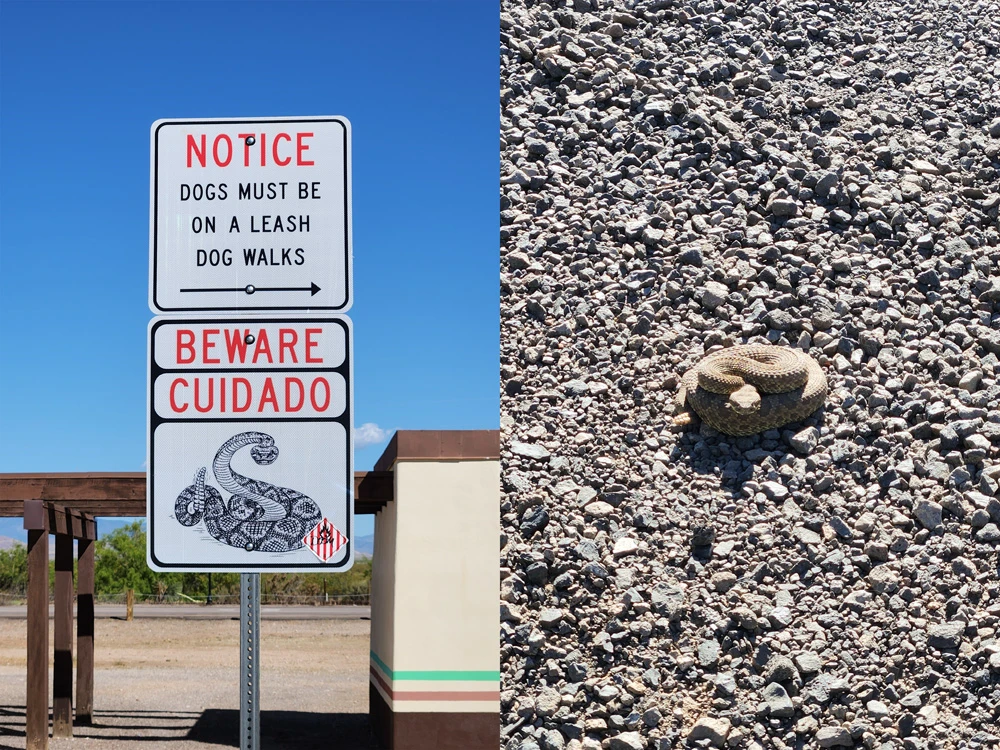
A small rattlesnake on a gravel road
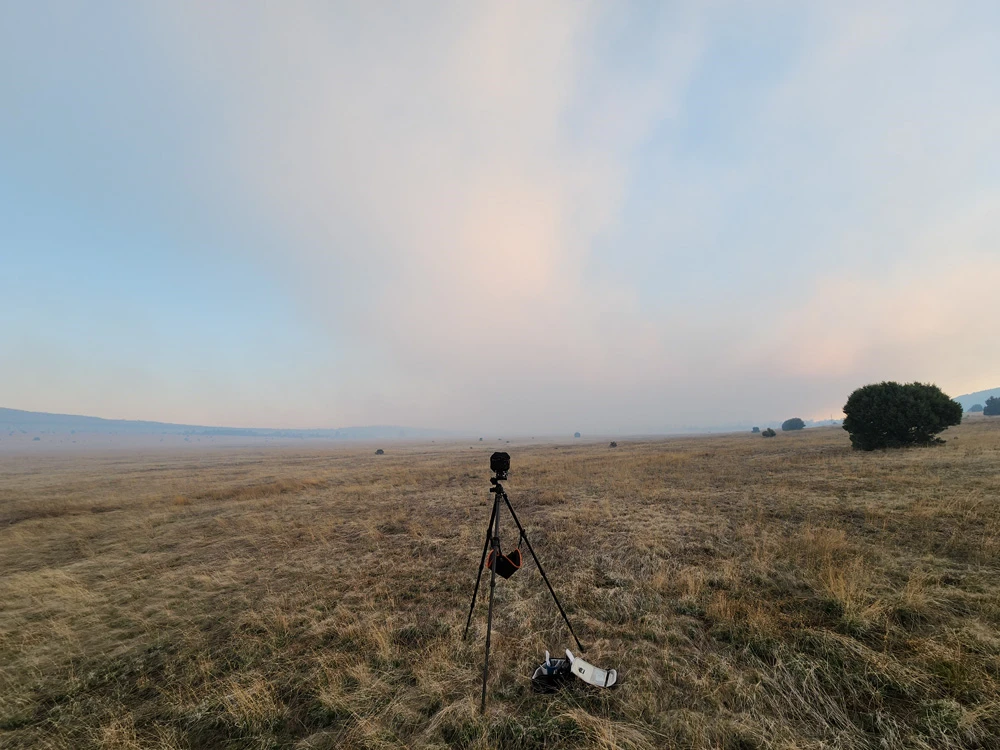
Photographing smoke from the Pass fire
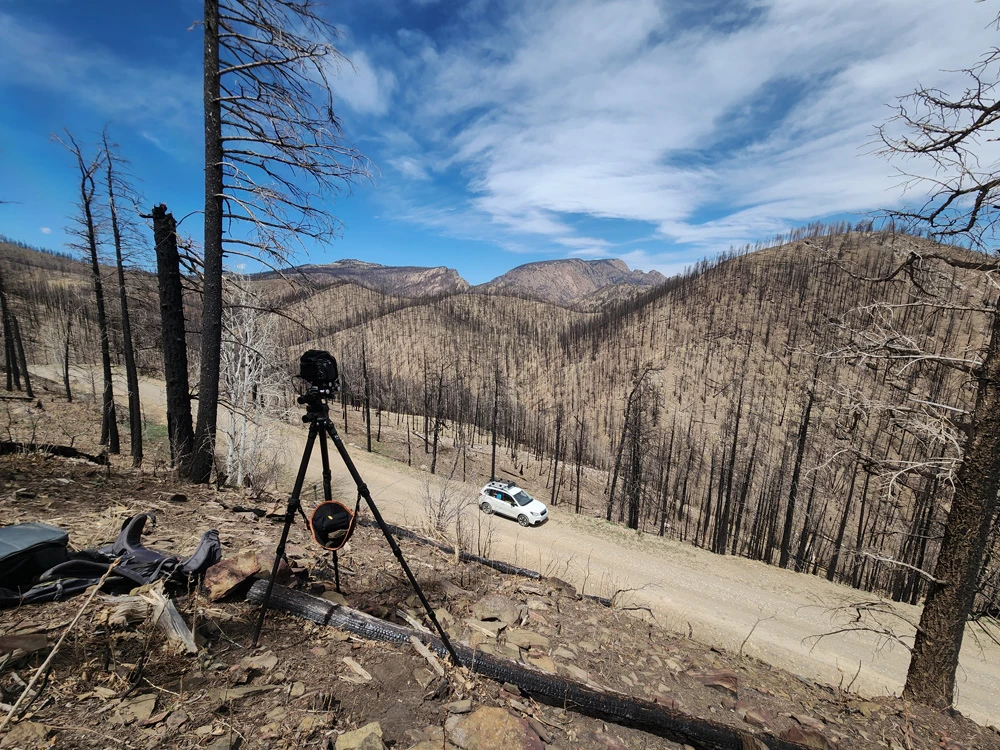
Photographing Hermit Peak and wildfire devastation
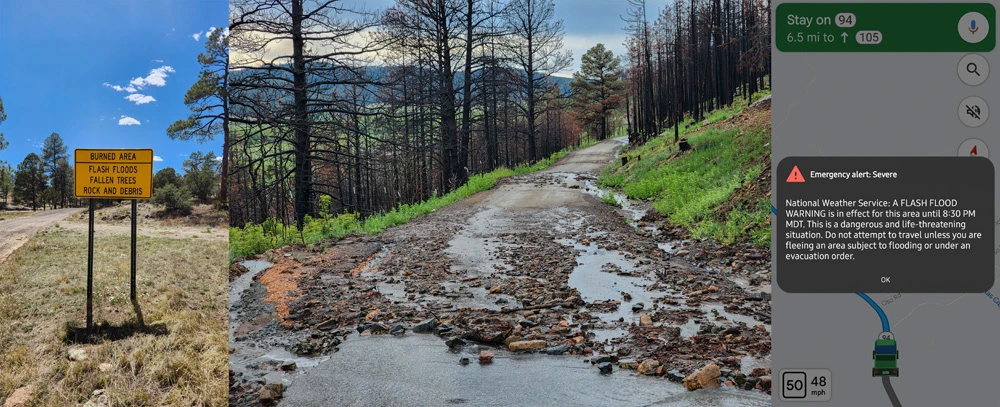
Flash flood while out photogrphing in Northwest New Mexico
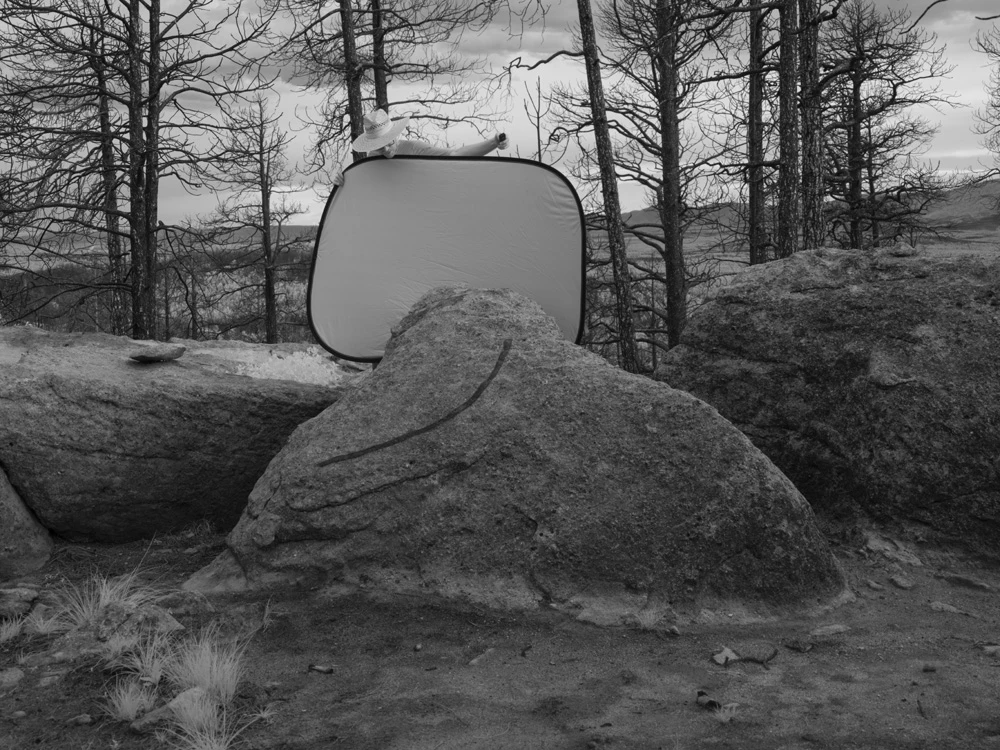
Lighting a rock I drew the Keeling Curve on
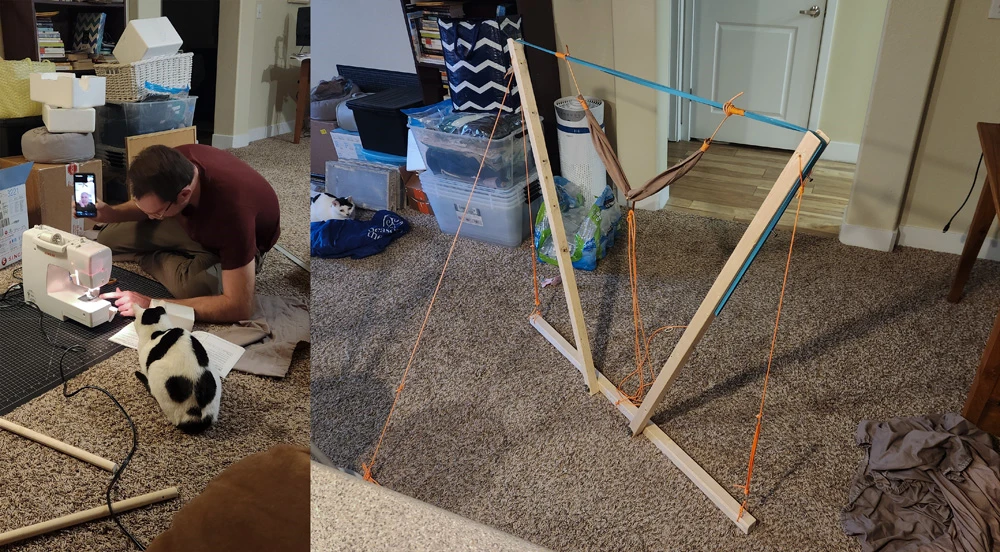
Sewing a sling to launch dust into the air
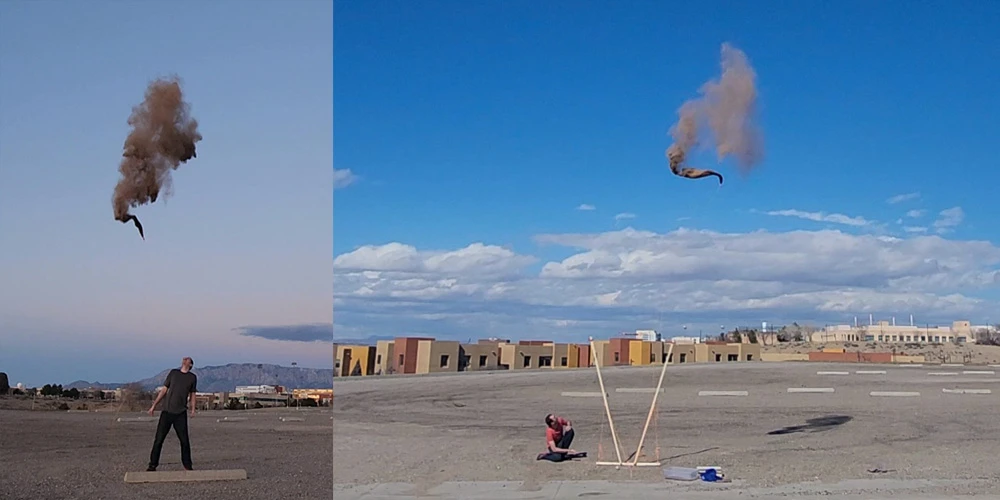
Practicing making dust clouds
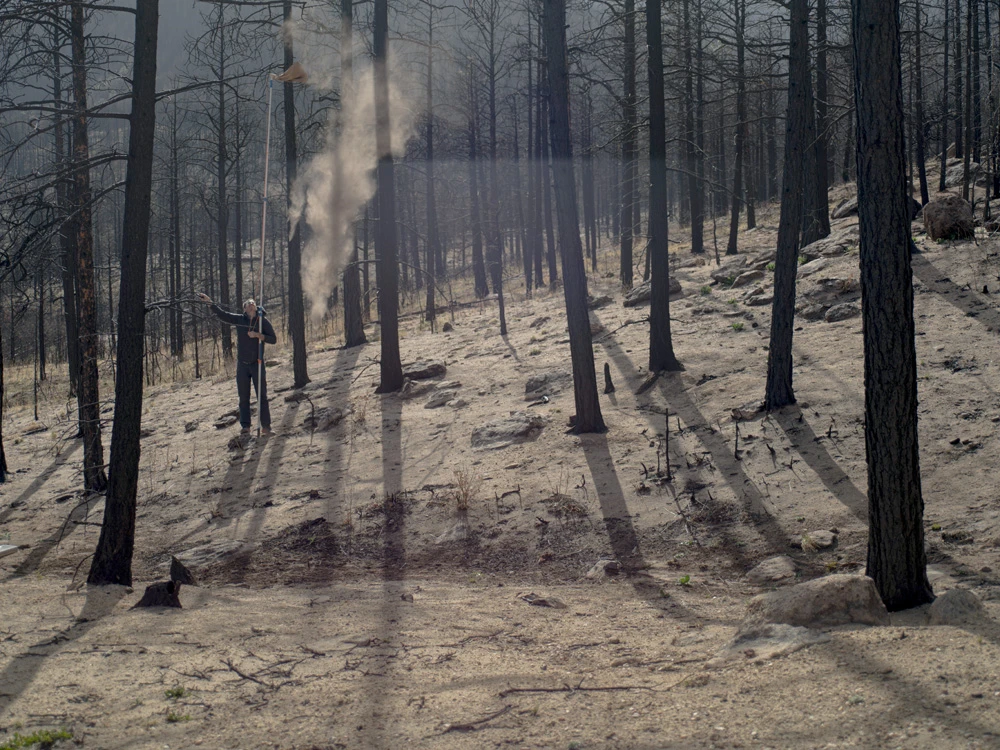
Making a dust cloud in the Santa Fe National Forest
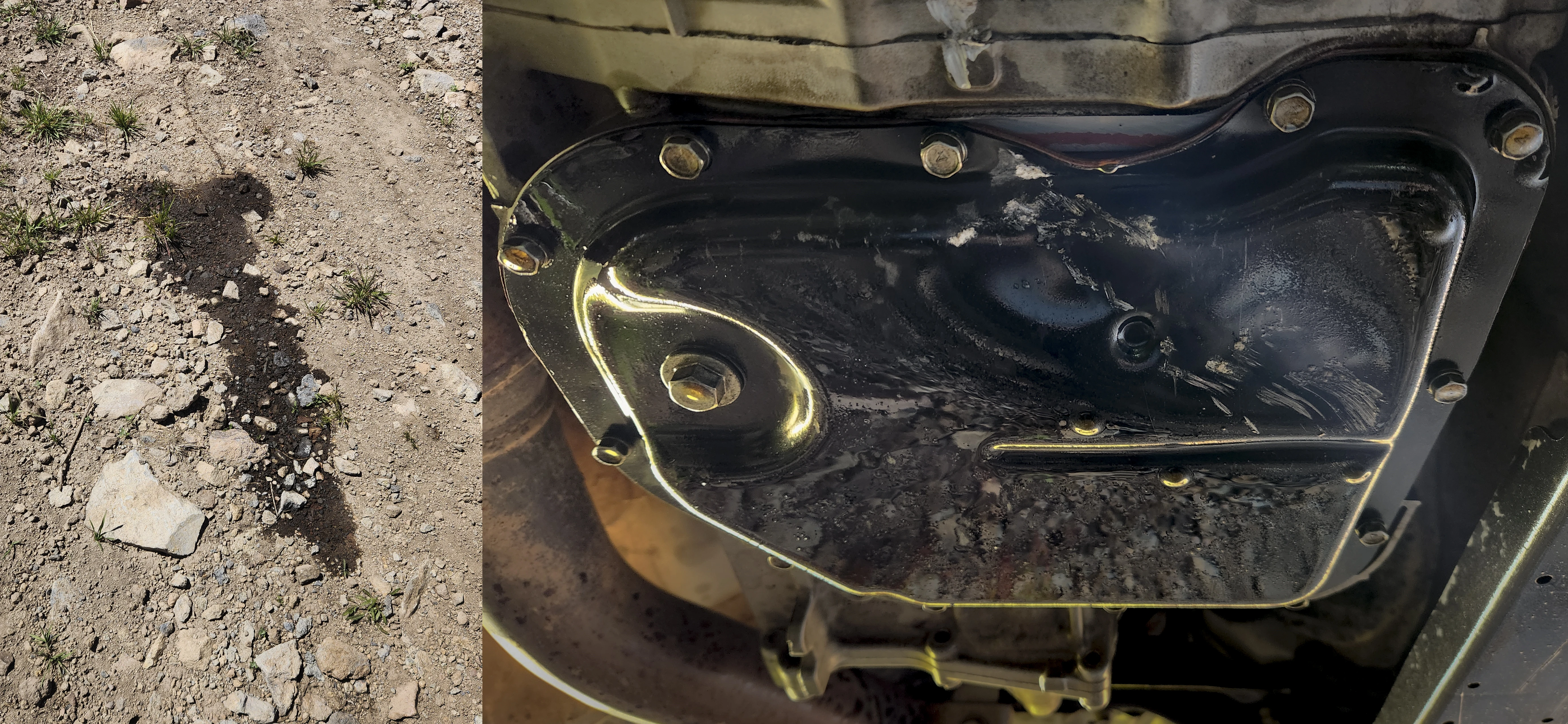
During a trip to the Gila, I damaged the transmission oil pan and became stranded far from town
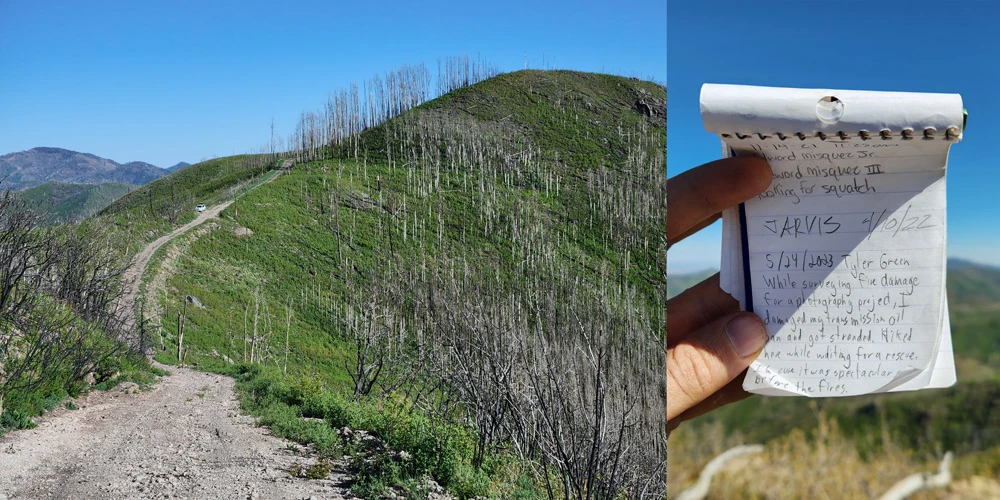
I made the best of the situation while waiting for a rescue
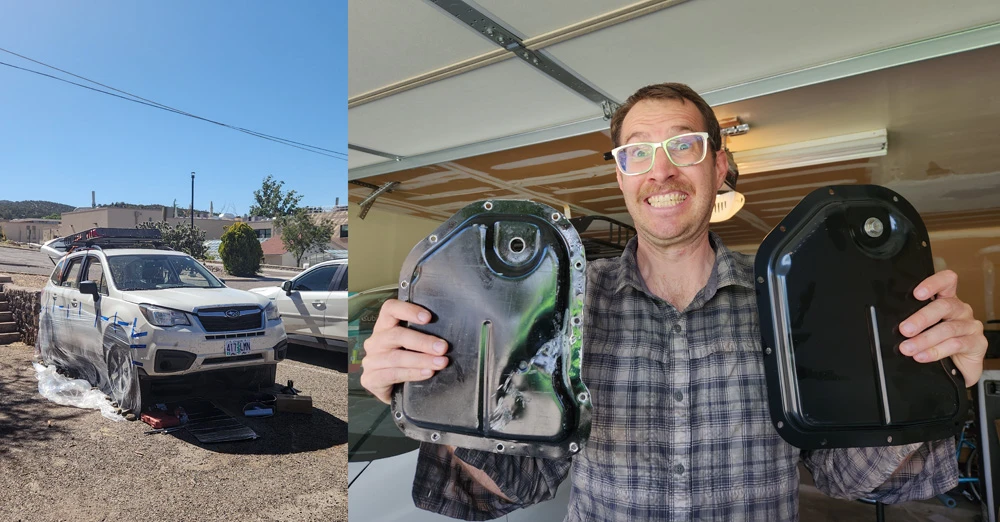
I had to hammer the oil pan into place, I could not get spare parts where I was and performed maintenance in a parking lot
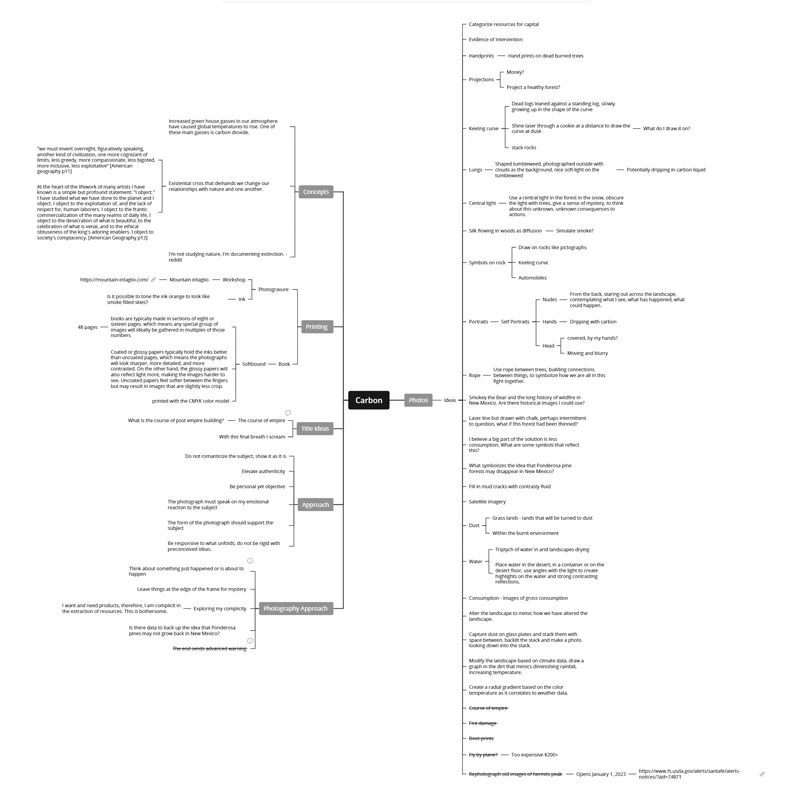
Original mind-map for this project
Light Art Space
Silver City, NM
October 10 to November 9
Open Space Visitor Center
Albuquerque, NM
June 15 to August 10
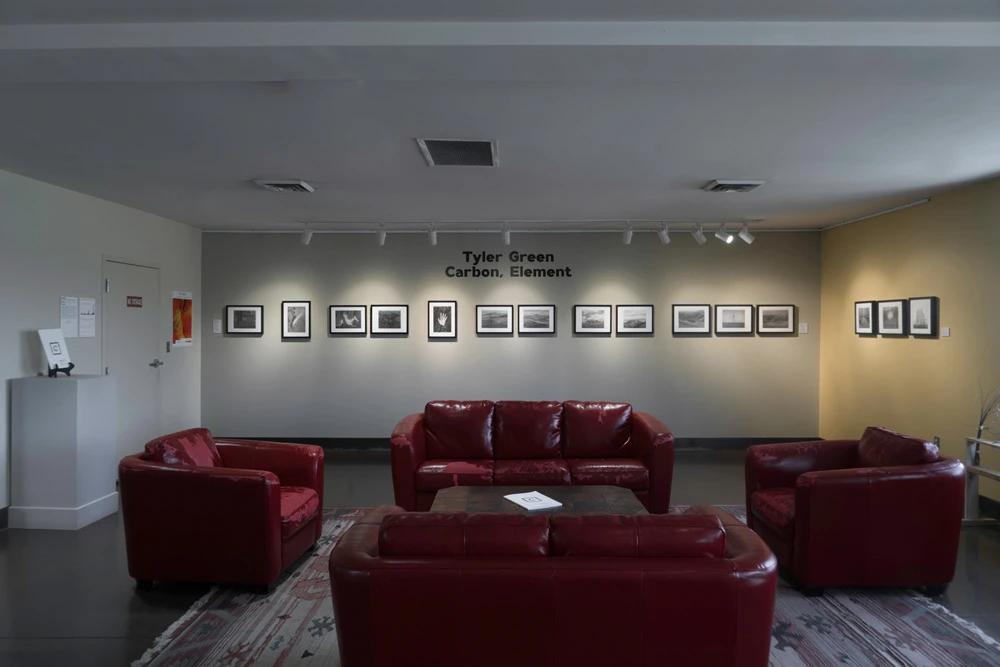
Installation I
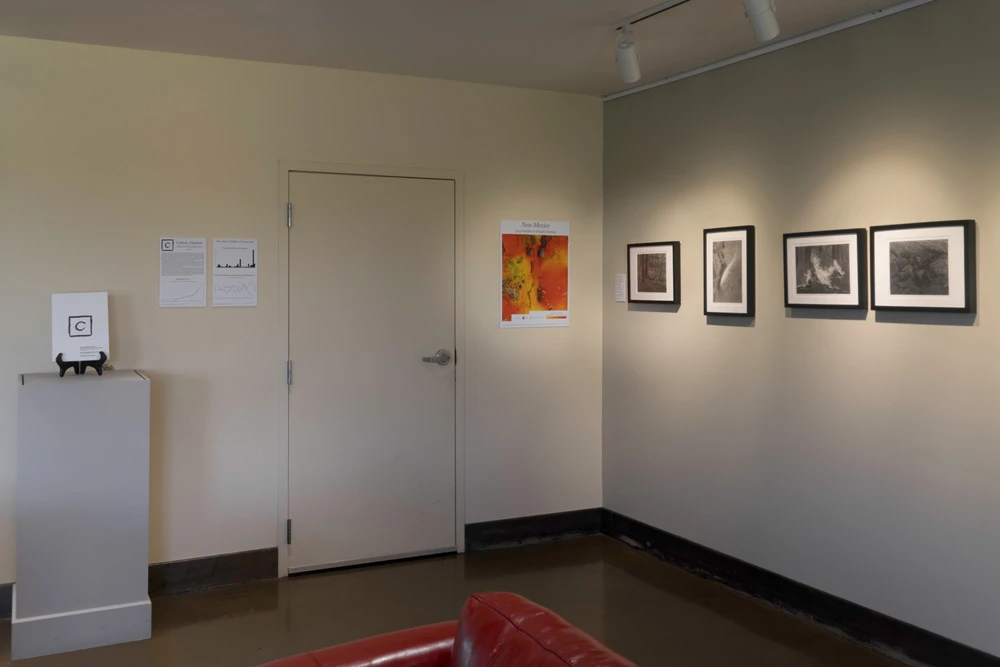
Installation II
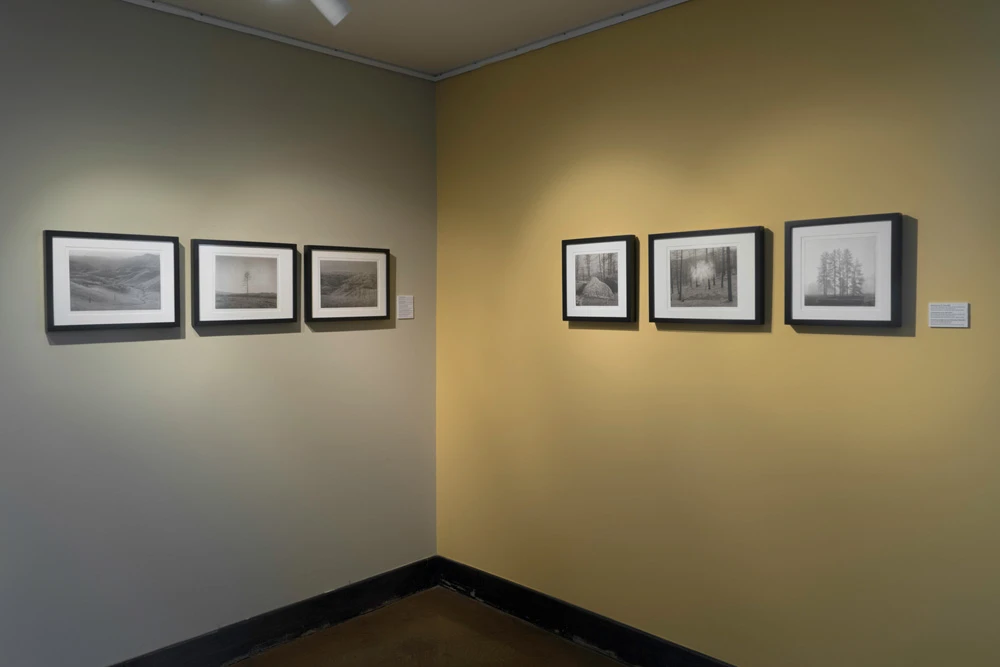
Installation III
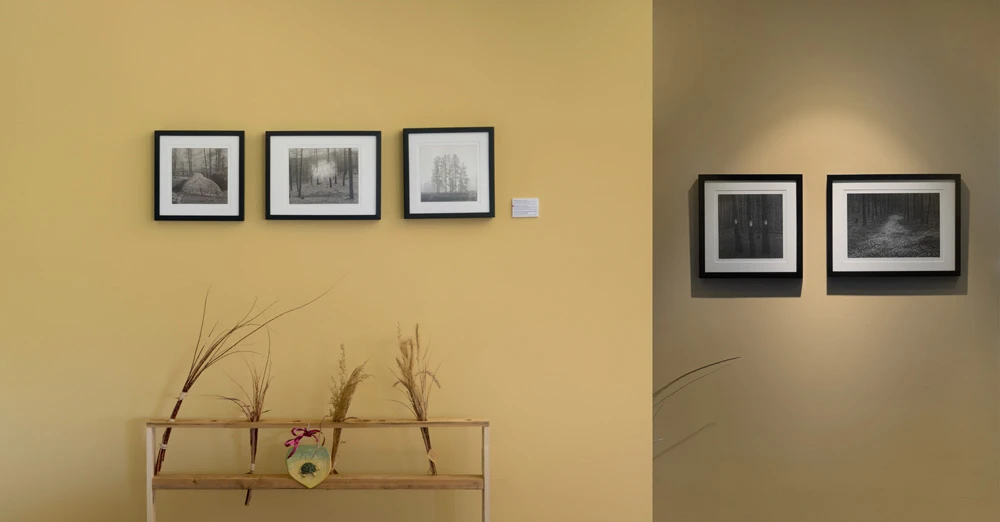
Installation IV
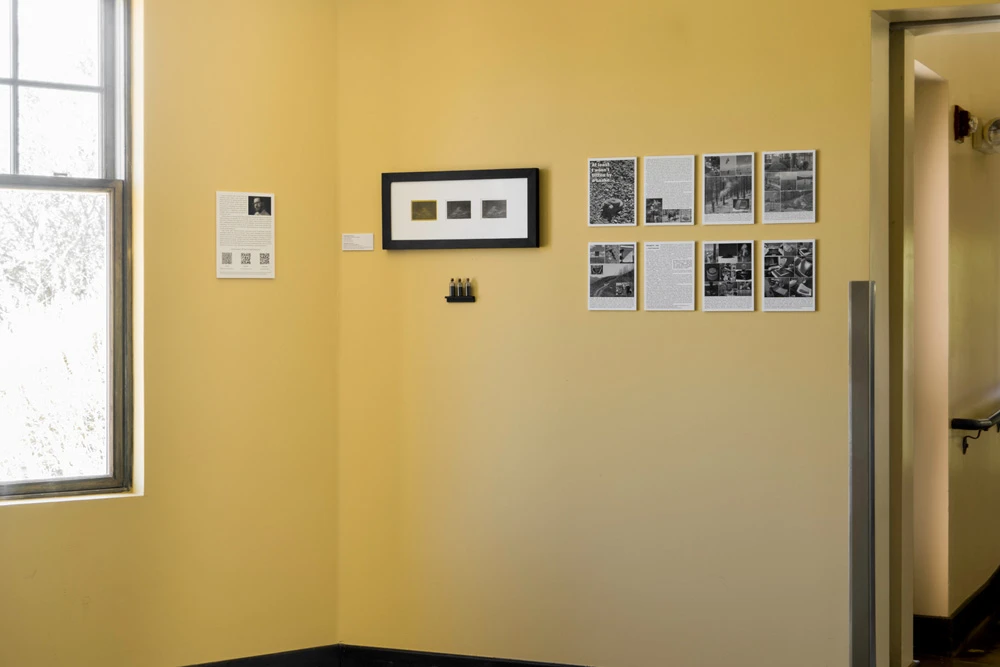
Example intaglio prints, artist made pigments and behind the scenes images
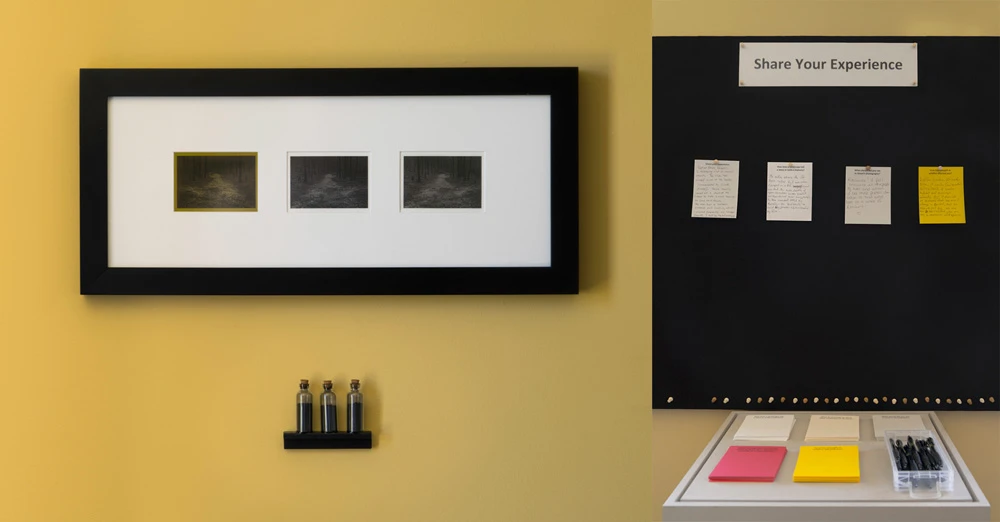
Example intaglio prints, artist made pigments and public testimony installation
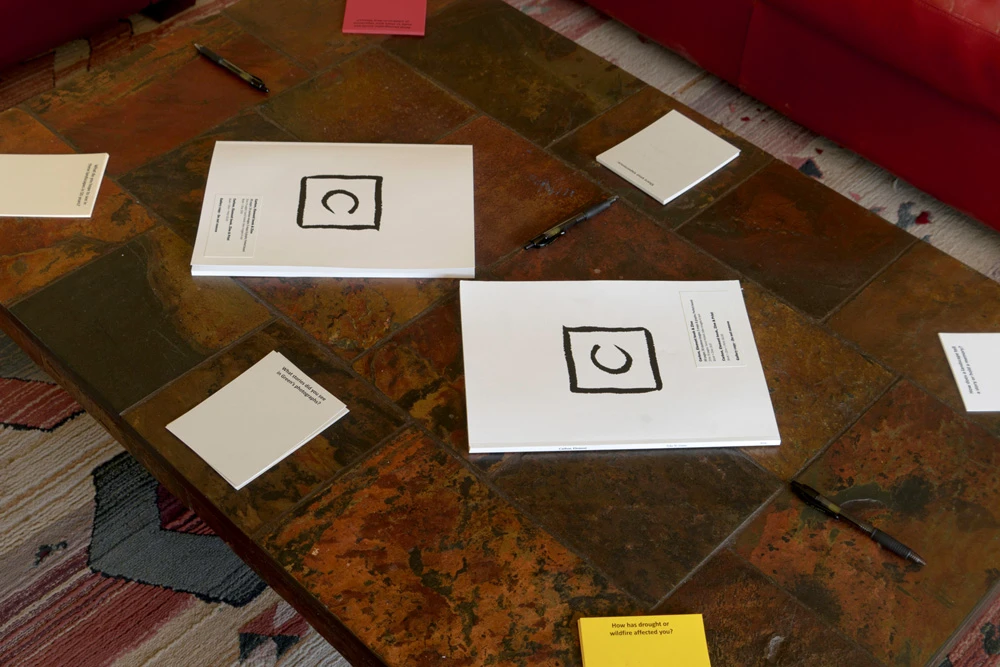
Exhibition books and cards for public testimony
